Dry Tortugas National Park – You Must Go
I’ve been going to the Florida Keys for over forty years, but until today I never got to perhaps the most interesting spot in all of Florida, the Dry Tortugas. When tourists line up for a block to get their pictures taken at the Southernmost Point buoy in Key West, most of them don’t realize that the keys keep going for another 70 miles or more, mostly west, but also further south than this marker. No big deal, it’s largely symbolic, but still, in the interests of accuracy and adventure, you can fly over the real southernmost point on the way to Fort Jefferson and the Dry Tortugas. Won’t you join me as I explain why a visit to these remote islands should be on everyone’s bucket list?
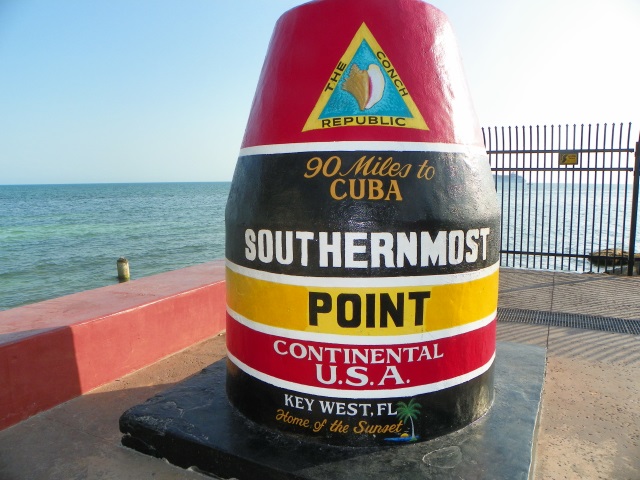
What are the Dry Tortugas?
Put simply, the Dry Tortugas are a chain of seven small keys that lie at a very strategic point between the Atlantic Ocean, the Gulf of Mexico and the western Caribbean. They were discovered by Ponce de Leon in 1513 and named for the many sea turtles that come ashore to lay their eggs (tortuga is Spanish for turtle). The word ‘dry’ was added later in recognition of the fact that there is no fresh water on any of them. To describe the Dry Tortugas as an inhospitable environment for humans would be an understatement, but hey, so is the moon and we’ve been there too. Because of its strategic location, the U.S. commenced building what is allegedly the largest brick construction in the western hemisphere to control the shipping lanes of the Gulf of Mexico. Fort Jefferson was under construction from 1846 to 1875 and was never entirely finished. In the 1800’s, service on Fort Jefferson, plagued by yellow fever outbreaks and dependent entirely on rainfall for fresh water, was literally the equivalent of being sent to the Siberian salt mines. It was a hell hole of the first calibre. Who in their right mind would pay good money to visit a place like this?
Me and thousands of others every year. Not only is Fort Jefferson, with its 2,000 arches and fascinating history worth the visit alone, but add in world class fishing, birding and snorkelling and you’ve got yourself a must see destination. That’s why it is a national park. It gets a grand total of about 65,000 visitors a year. Compare that to the 10 million plus that visit the Great Smoky Mountains and you’ll understand why going to the Dry Tortugas is pretty special.
How to Get There
Unless you have your own boat or seaplane, there are only two ways to get to the Dry Tortugas. The most popular and cheapest is on the boat, Yankee Freedom which departs from Key West at 8:00 AM each day and take two hours and fifteen minutes to reach Fort Jefferson. Visitors get to spend about five hours on Garden Key before returning at 3:00PM. Total cost is $175.00 and includes a buffet lunch. This is a shot of the Yankee Freedom tied up at the Garden Key dock from inside Fort Jefferson.
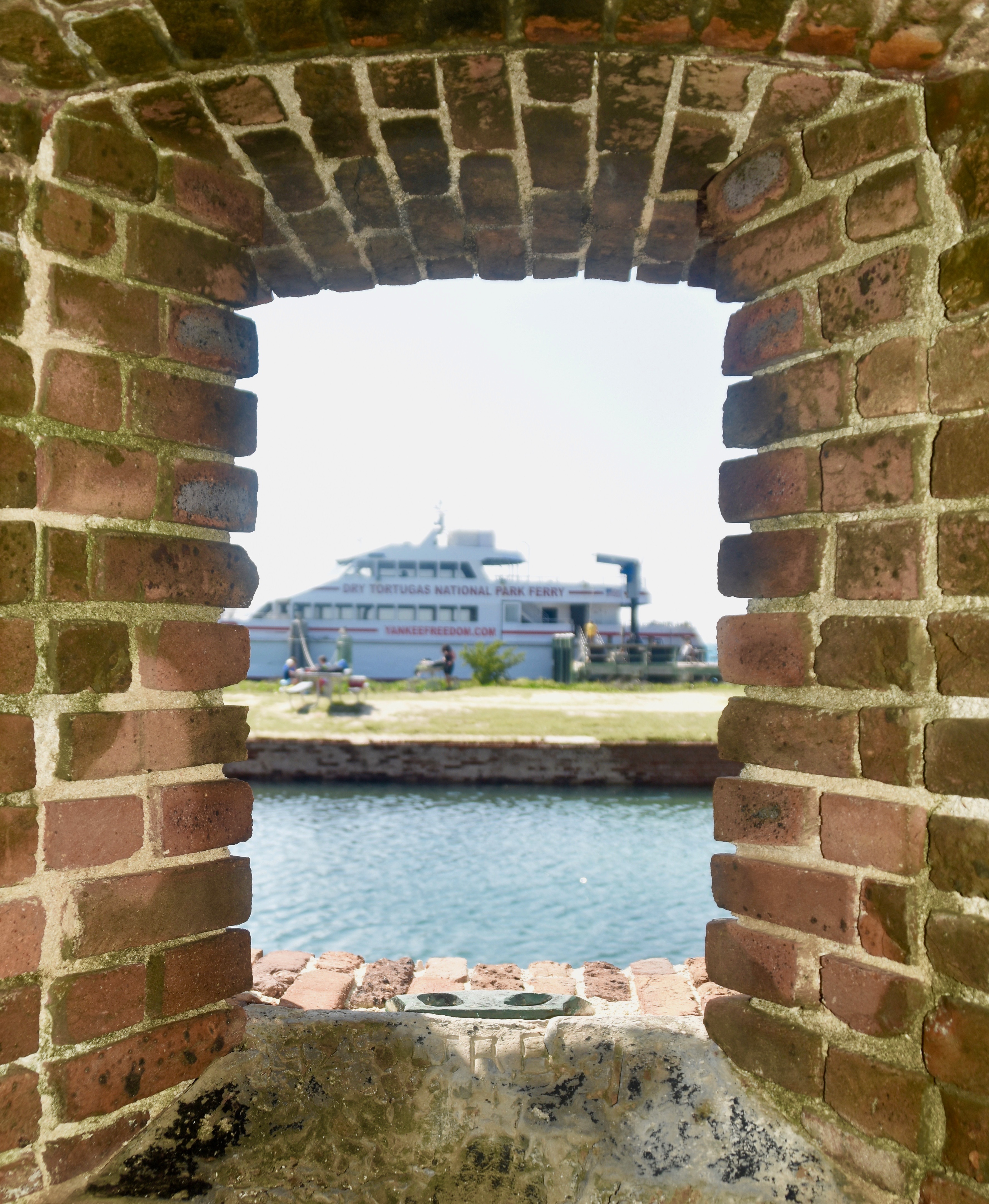
The other way to get to the Dry Tortugas is by seaplane, which was my chosen mode of transportation. Key West Seaplane Adventures has several daily departures from Key West airport. You can take a four hour tour, which I did, for $329.00 or spend the day on the island for $578.00. Can’t say I can figure out why the whole day tour costs so much more considering both involve the same amount of flying time. What follows is a description of what you can expect on the half day plane trip to the Dry Tortugas
Flying to the Dry Tortugas
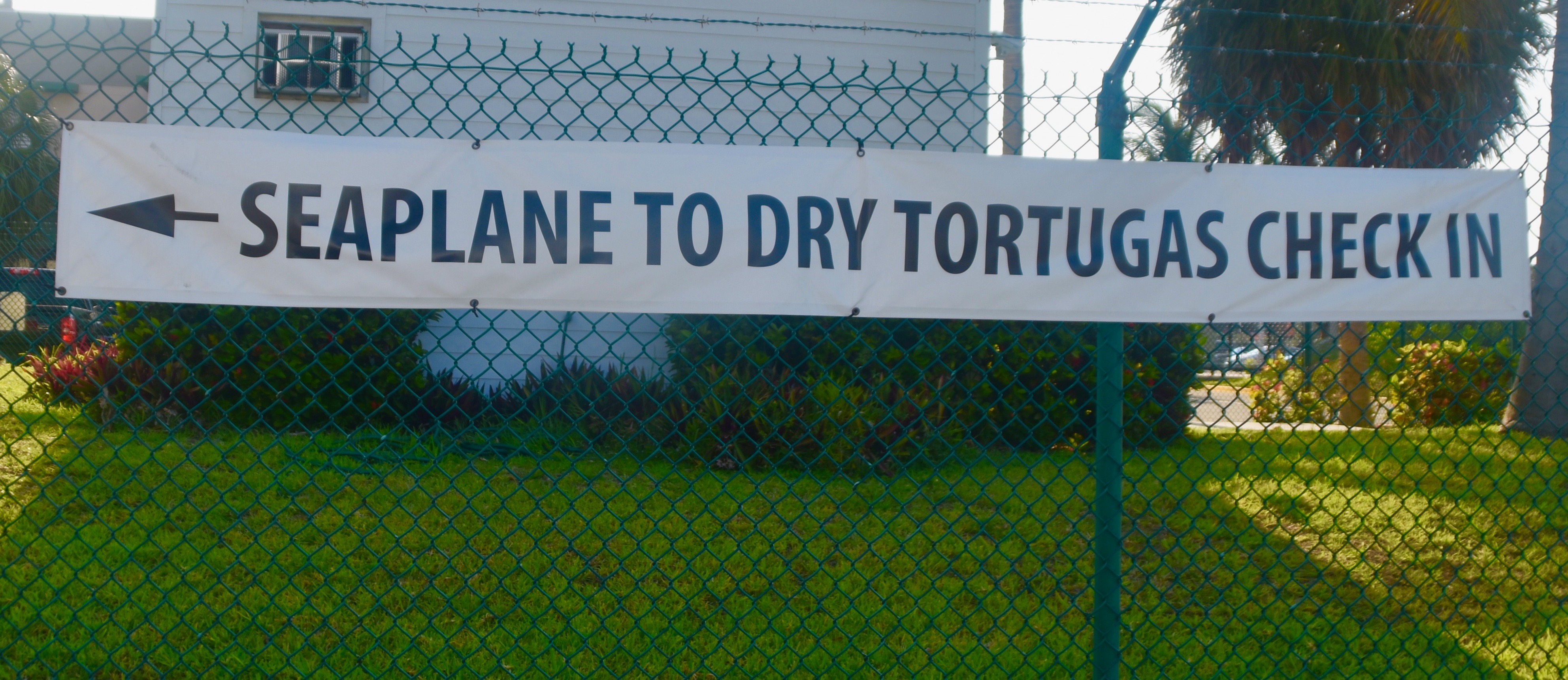
The adventure begins at the Key West airport where Key West Seaplane has a small check in counter and you watch a video of all you can see and do, not only on the Dry Tortugas, but on the way there and back. Parking is free, which is a nice plus, considering the usual extortionate airport parking rates. Upon check in you get a boarding pass with the name of your pilot, in our case John. I guess that makes the passengers a bunch of john’s.
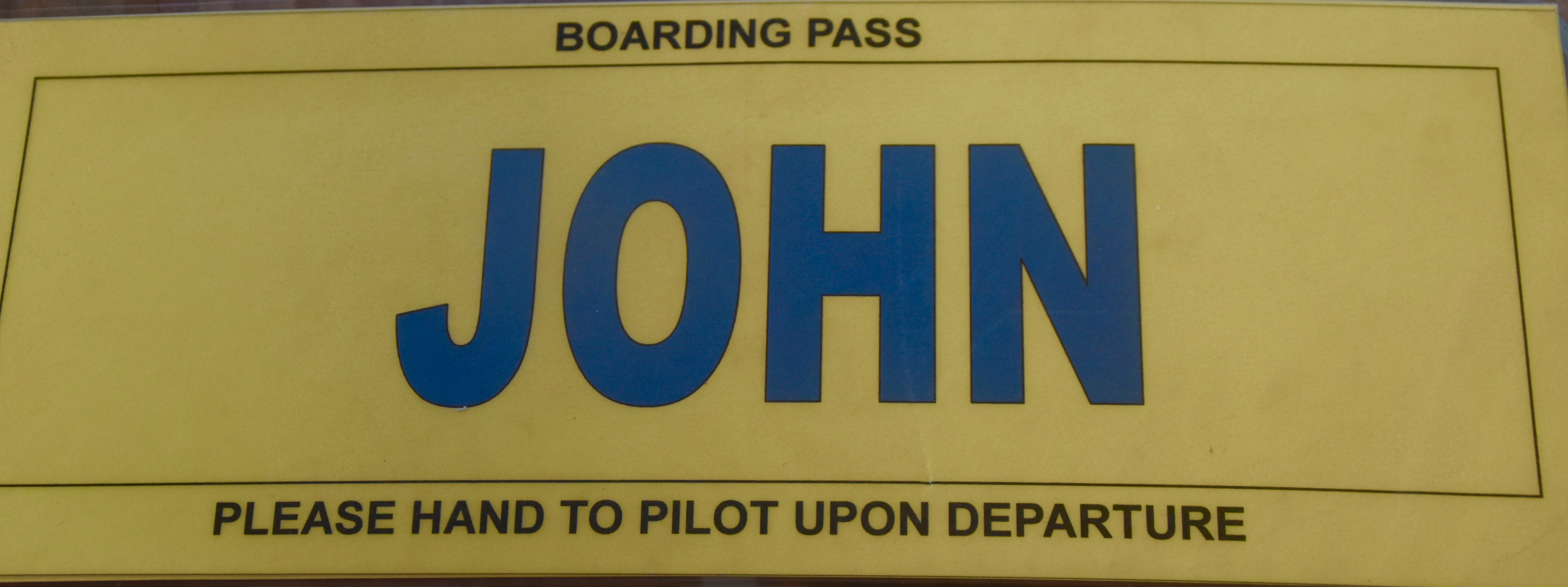
The plane is a De Havilland Otter, probably the most famous bush plane ever built.
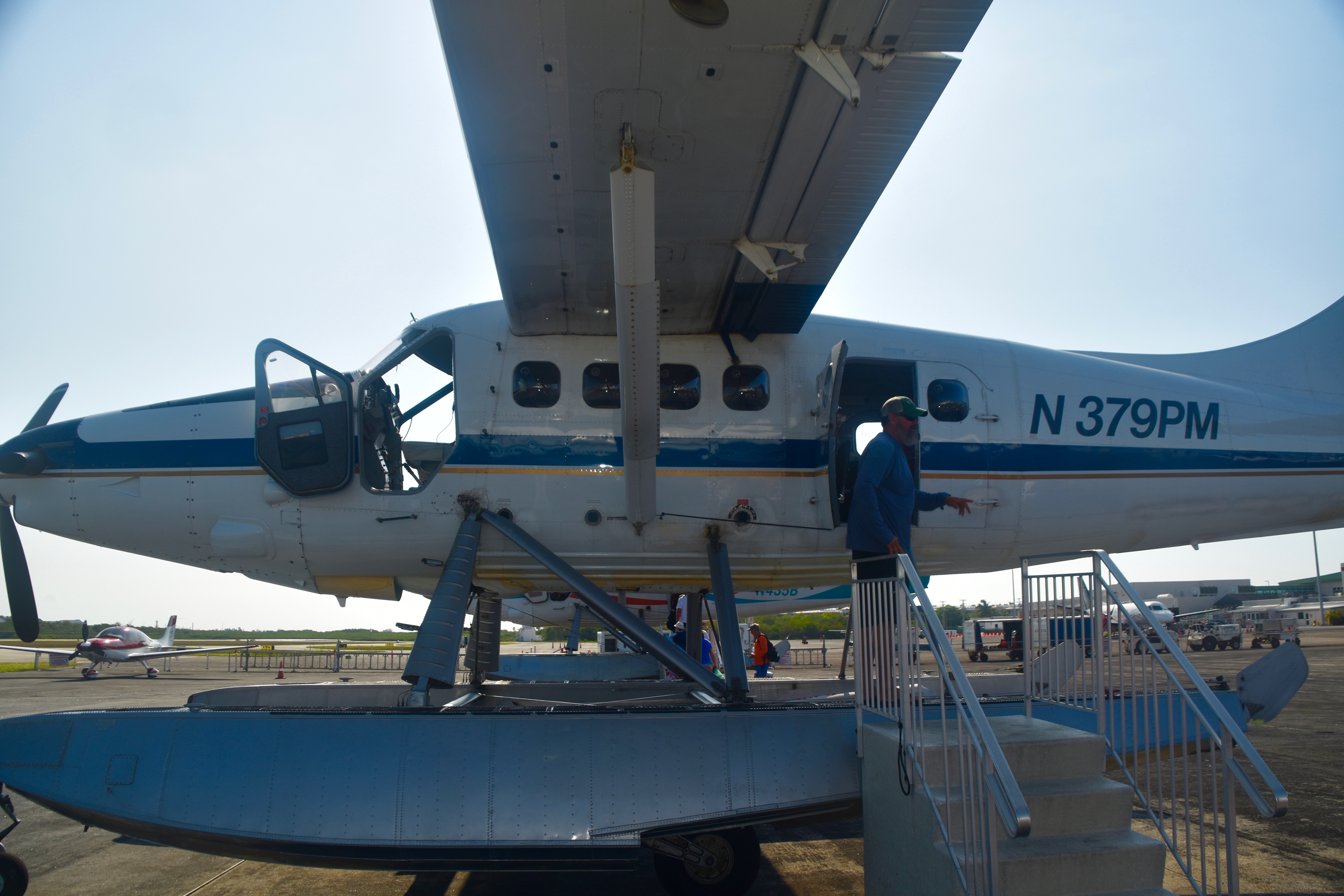
First built in 1951, the same year I was born, many otters remain in use today throughout the world. Note that it has both wheels and pontoons that allow it to take off from both land and sea. Everybody gets their own window seat and one lucky passenger gets to sit in the co-pilot seat.
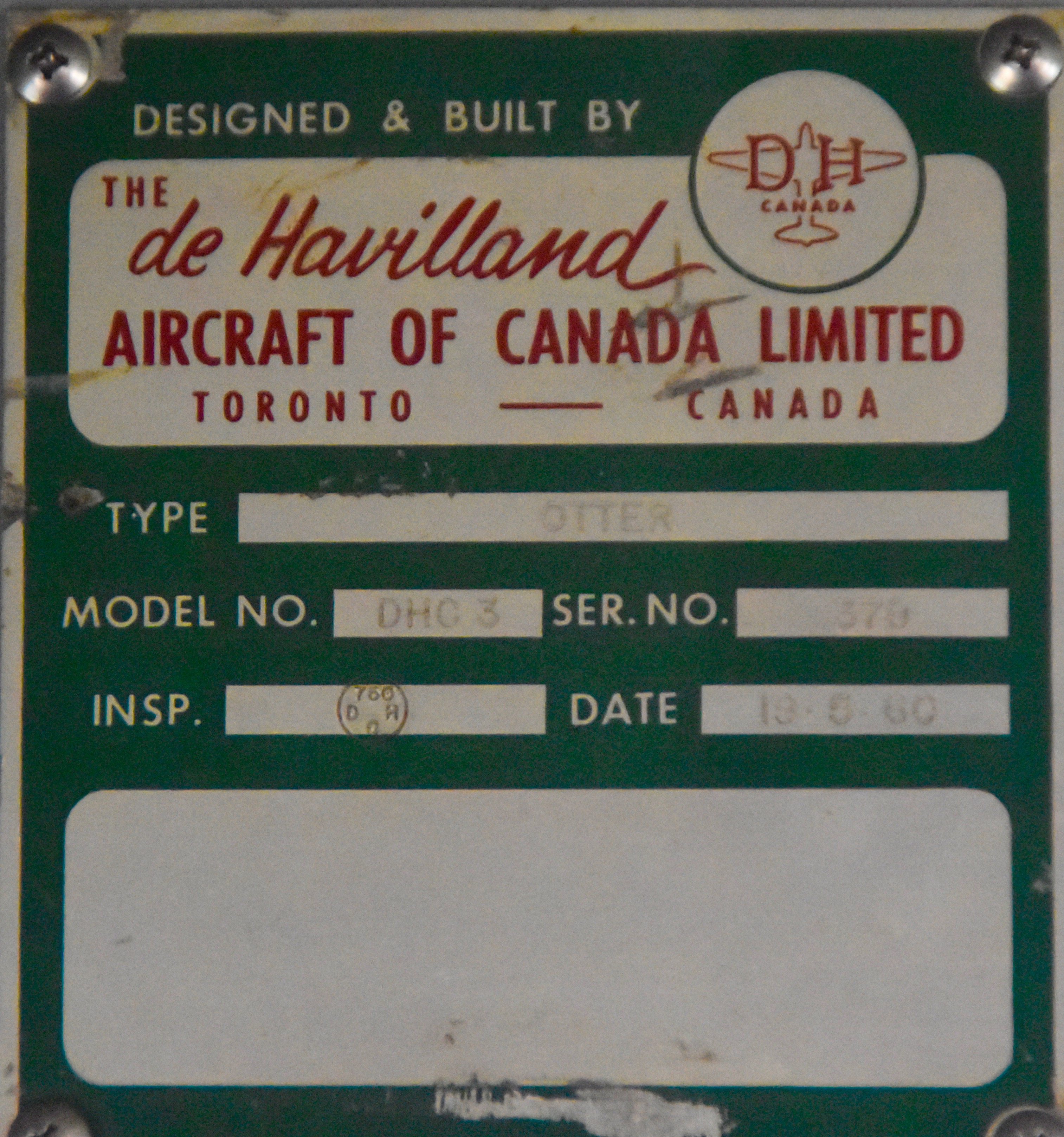
The otters may be durable, but they’re also incredibly noisy so everyone gets a set of headphones through which you can hear the pilot as he describes the interesting things you will see on the 40 minute flight to Fort Jefferson.
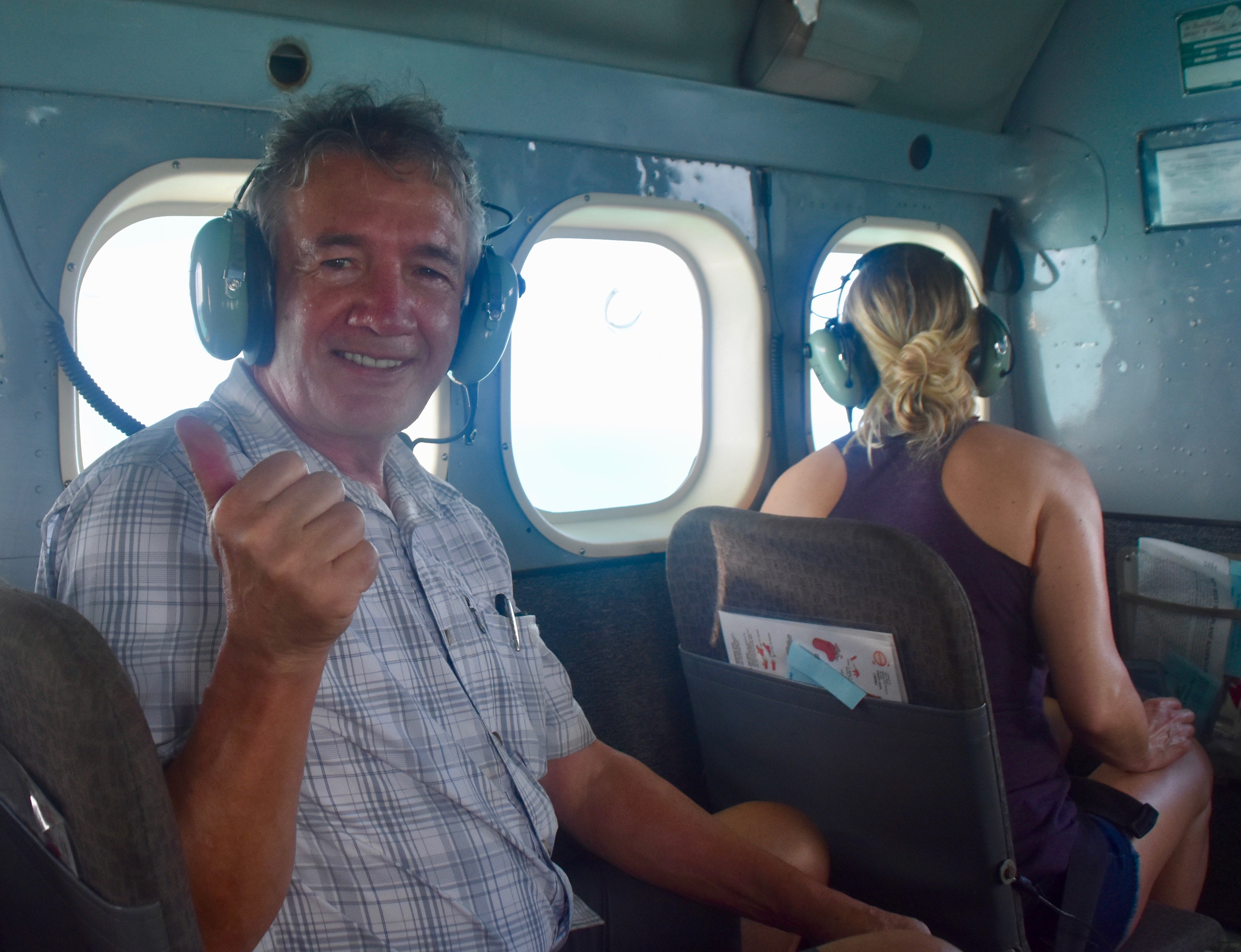
First off come the keys west of Key West, as weird as that sounds. This is Ballast Key, the only inhabited island between Key West and the Dry Tortugas and the actual southernmost point in the continental U.S. It is famous for the writers who have shacked up there including Tennessee Williams and Truman Capote. It also is featured in a scene from the James Bond movie License to Kill.
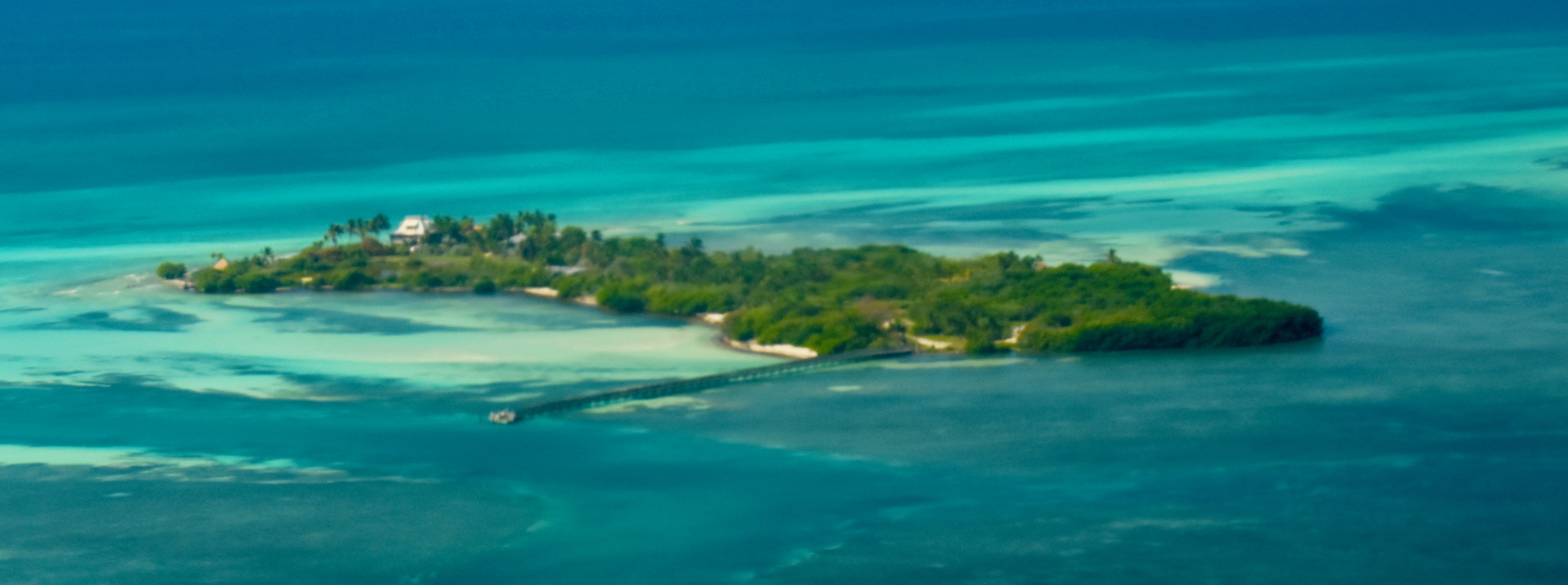
Next is Boca Grande Key, the last and largest of the Mule Keys that stretch from just beyond Key West to the channel that separates them from the Marquesas Keys.
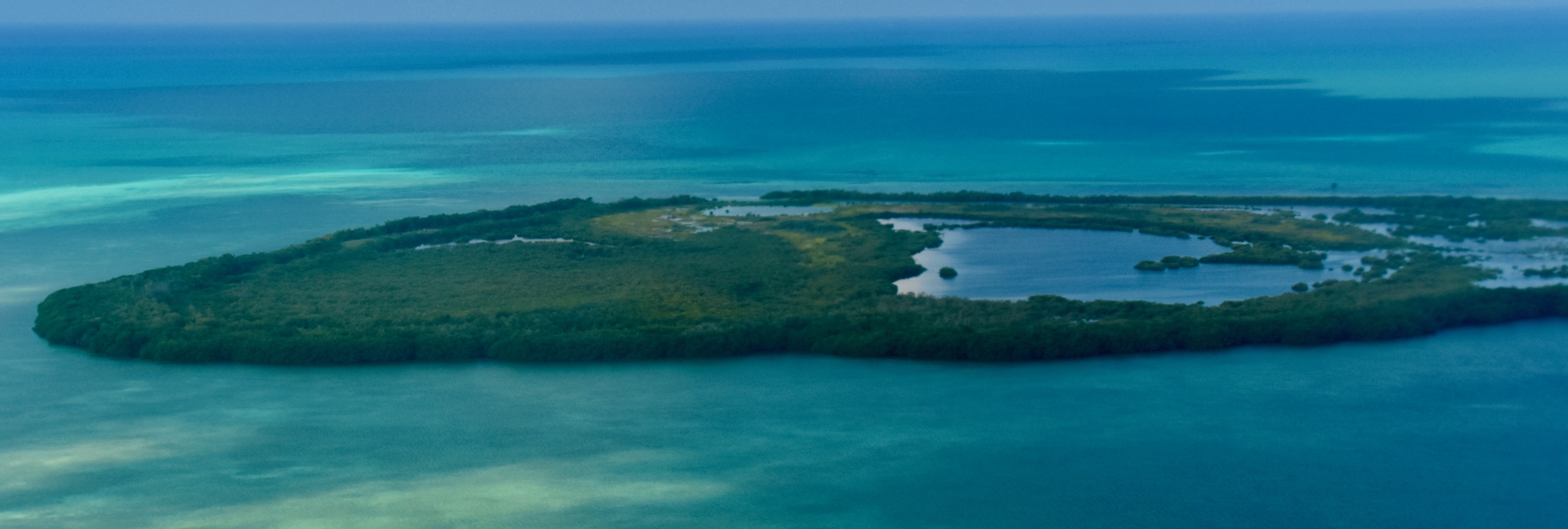
The waters are both incredibly clear and very shallow. Between the Mule Keys and the Marquesas is an area known as The Lakes where you can see freshwater springs bubbling up from the seabed. That is followed by The Quicksands which is an area that has what appear to be underwater sand dunes that shift regularly with the tides and currents.
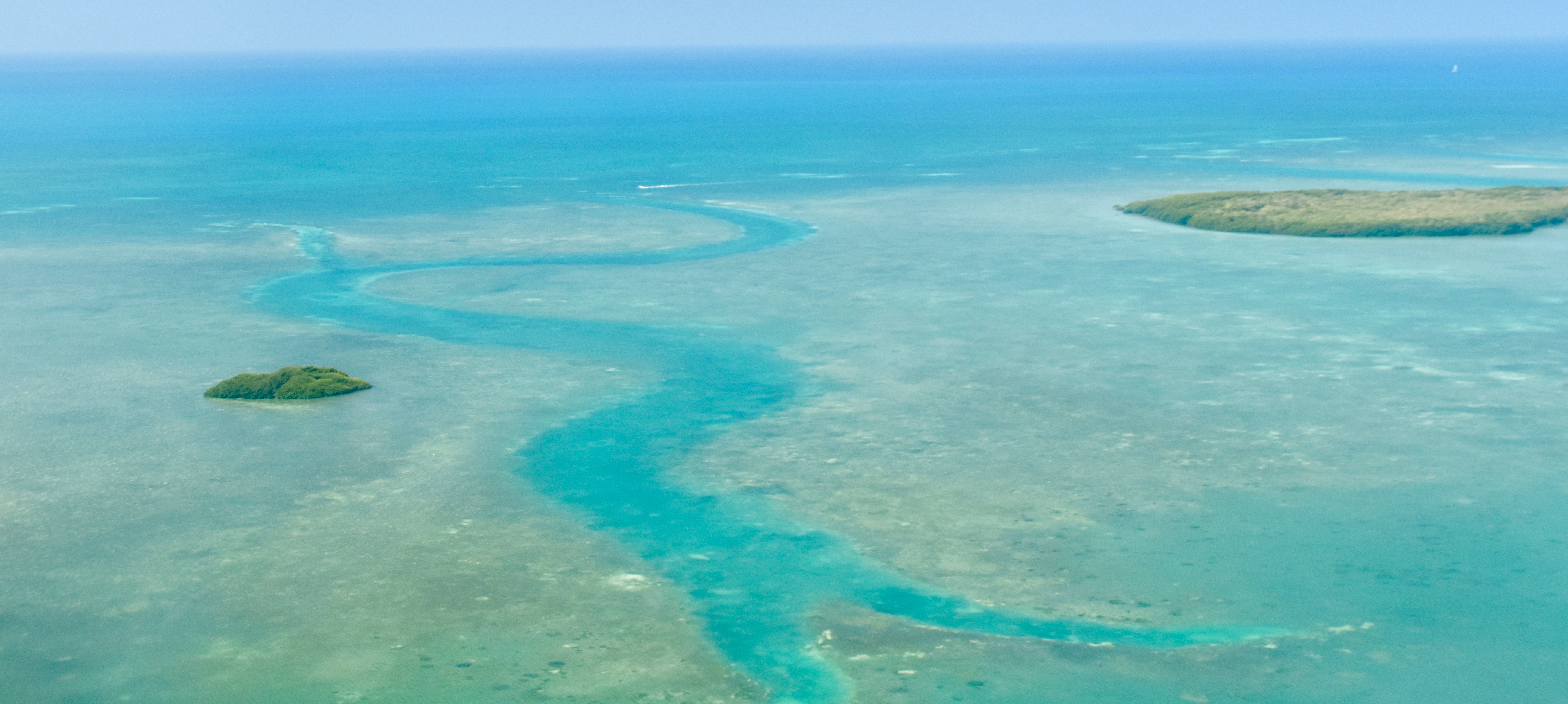
The plane flies no higher than 500 feet so with the clarity of the water it is possible to spot sharks, dolphins and sea turtles. There are also shipwrecks. This is the wreck of the Arbutus which sits on the site of a much more famous shipwreck, in fact the richest find ever by a treasure hunter. The Spanish galleon Nuestra Señore de Atocha sunk here on September 6, 1622 taking an entire shipload of gold, silver and precious gems to the bottom. Rediscovered by Mel Fisher in 1985, it rewarded him with over $400 million in booty. The Arbutus was one of Fisher’s boats used in the salvage operation.
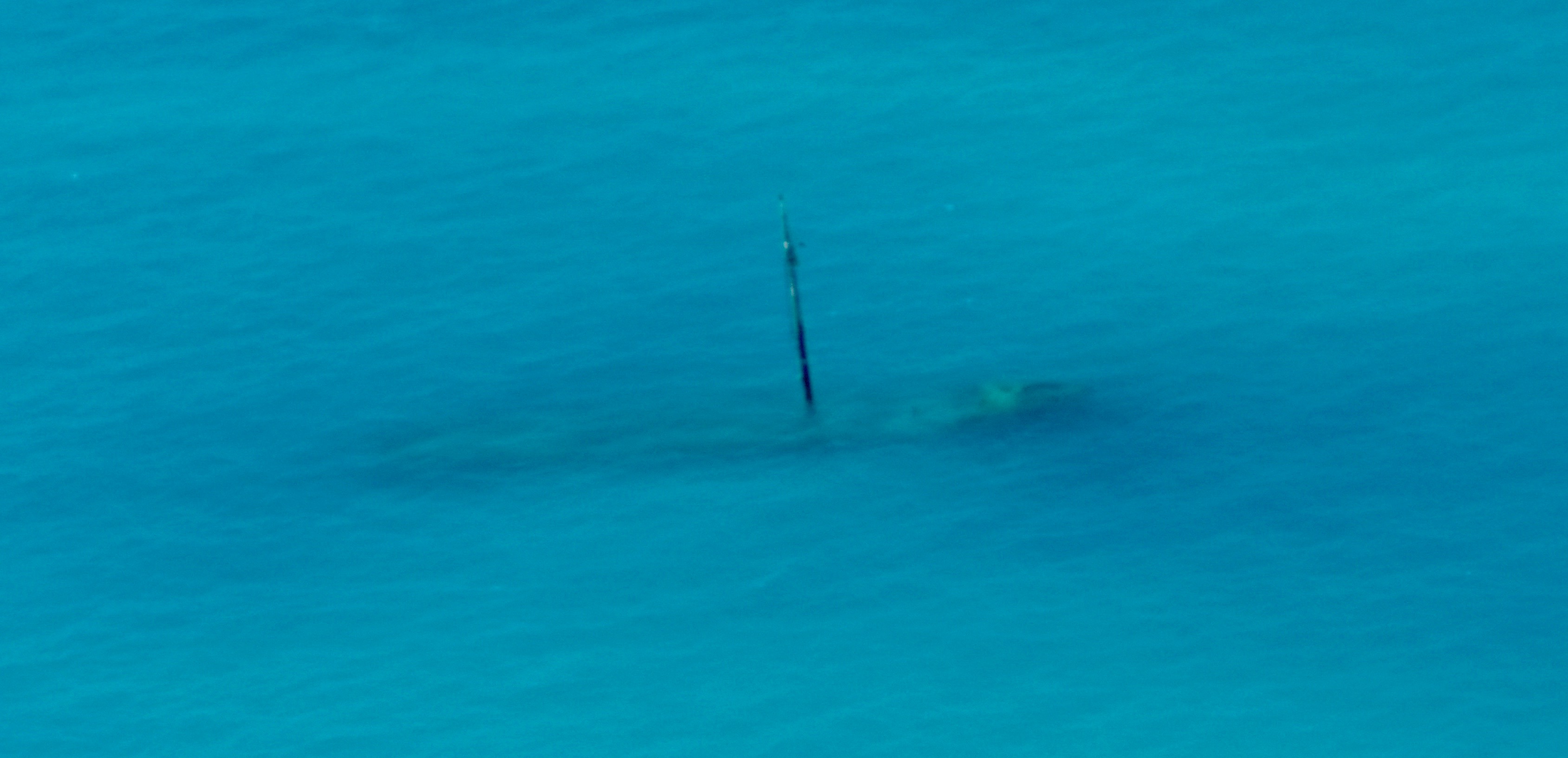
Between the Marquesas and the Dry Tortugas there is a deep water channel through which pretty well all large ships in the area must pass and the reason Fort Jefferson was built. As you approach Garden Key, you get a good view of the 150 foot tall Loggerhead Key lighthouse.
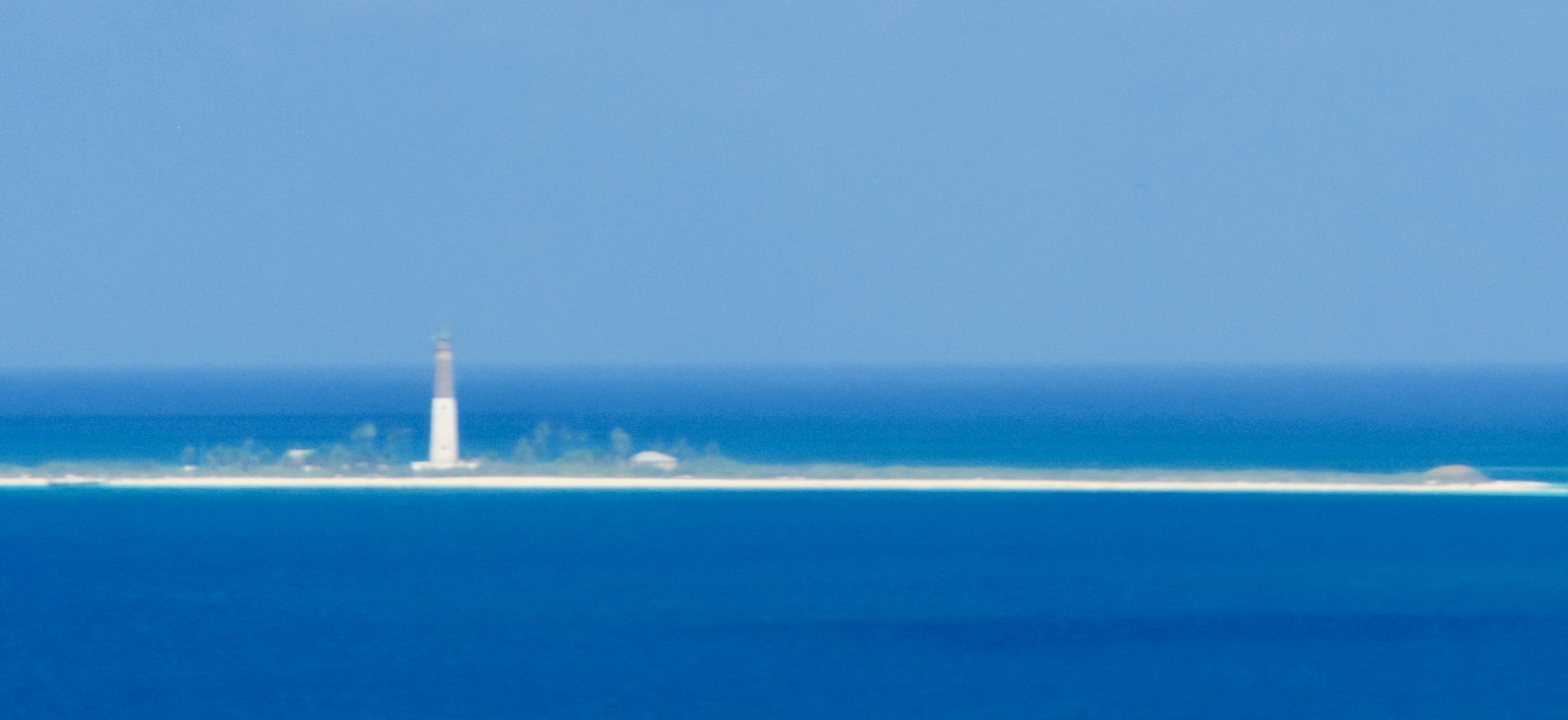
And then Fort Jefferson comes into view. It’s actually a thing of beauty to witness from the air and pretty damn amazing that they could build something this huge on an island so small and isolated. You can see the Yankee Freedom tied up at the wharf and other private boats at anchor. After landing, the sea planes come into shore right beside the large boat.
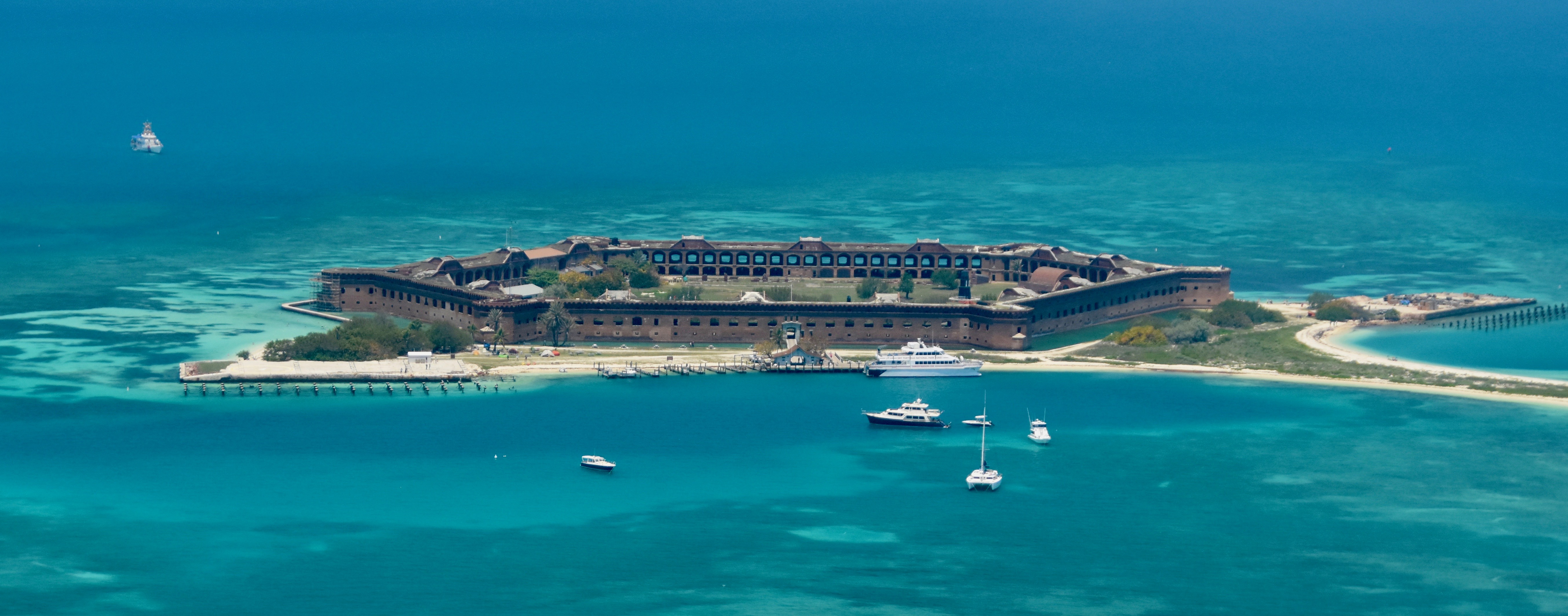
So, there is a lot to see just on the way to Fort Jefferson, now it’s time to explore the island.
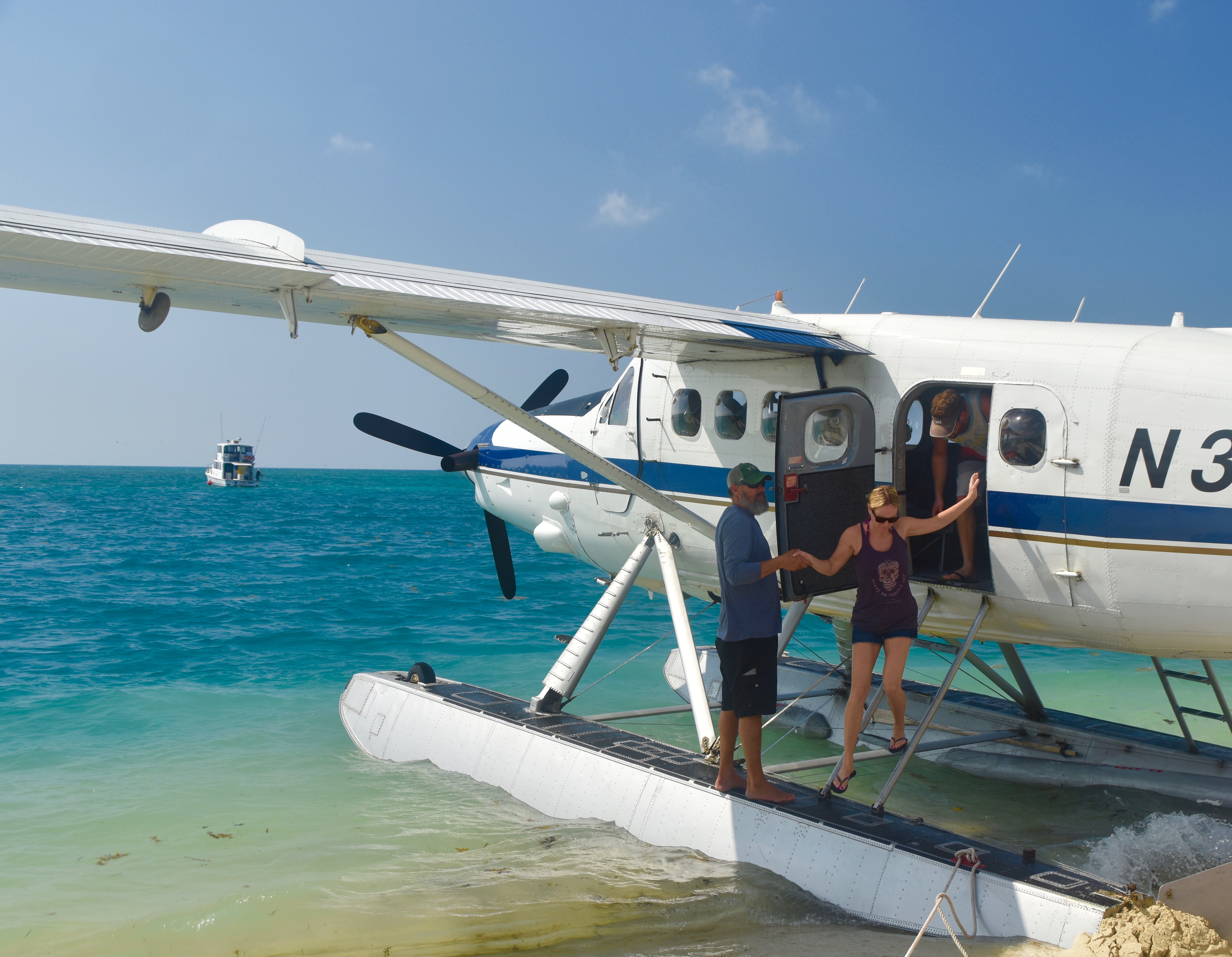
Exploring Fort Jefferson
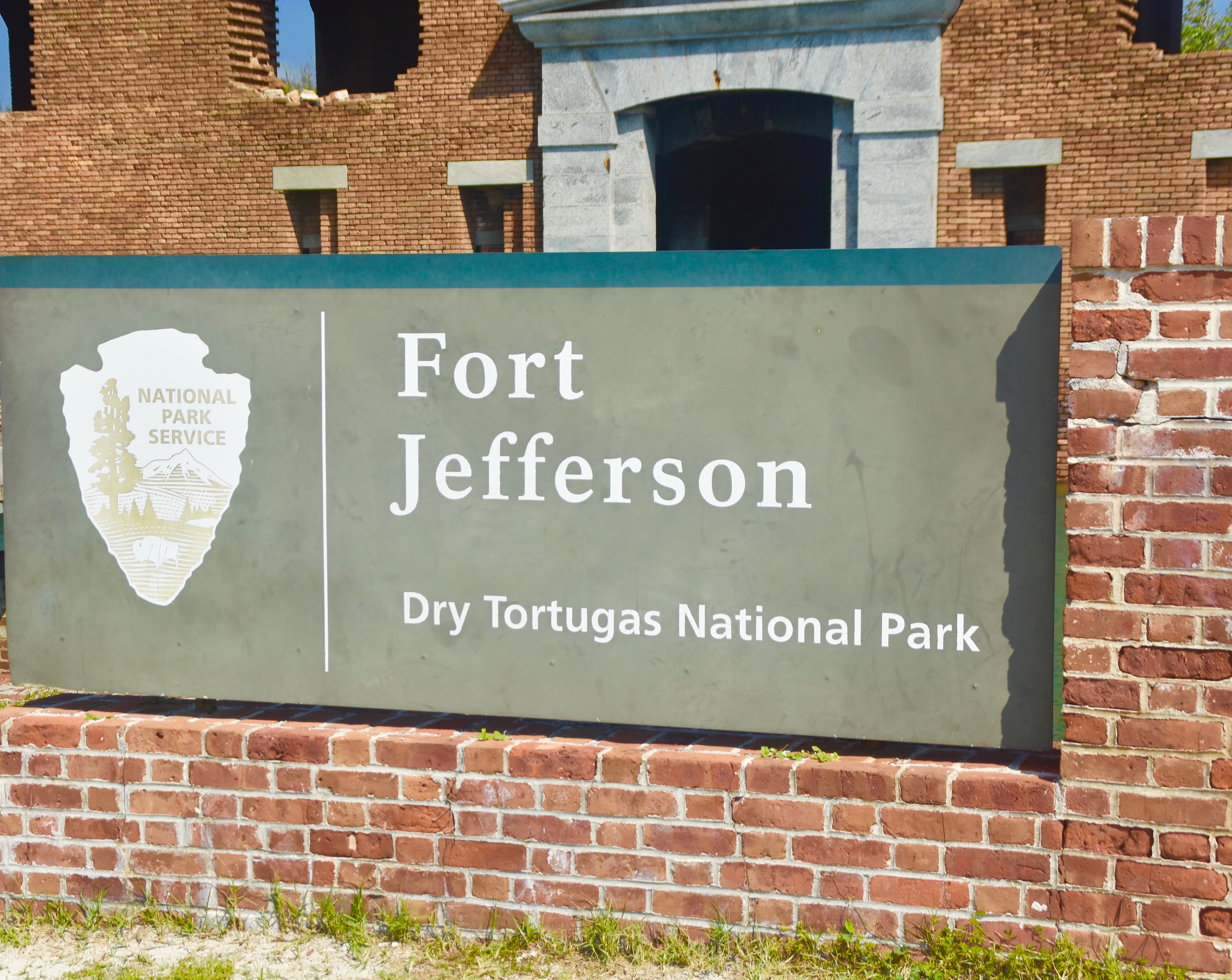
Finally on Garden Key, I had a three part agenda. The first was to explore Fort Jefferson, the second to observe the active tern and noddy colony on Bush Key and the third to go snorkelling. I had no idea if this was actually doable in the time we had on the island, but did my best. As it turns out it was possible to do all three, but just.
Composed of over 16 million bricks and with 2,000 arches, Fort Jefferson is simply massive. It is completed surrounded by a moat, which seems a bit strange since the waters surrounding the Dry Tortugas would seem to be the best natural moat anyone could wish for.
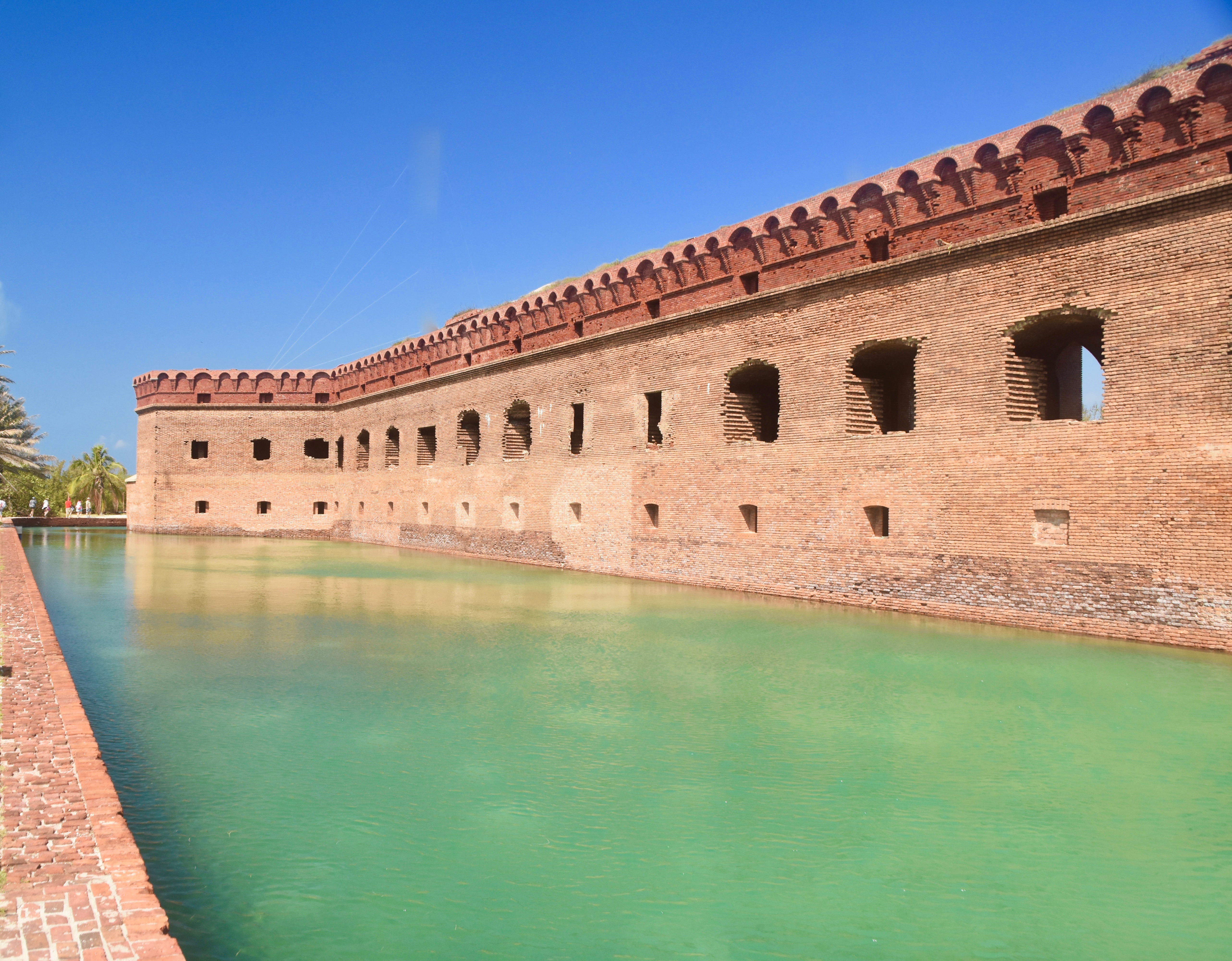
As 19th century forts go, Fort Jefferson is in pretty good shape with about 80% open to the public. In terms of exploring it, there are three levels to walk around and then the moat. The largest buildings that were originally inside the fort walls are now gone so most of what you are going to see is the masonry walls and arches, plus the great views from the fort. Let’s go.
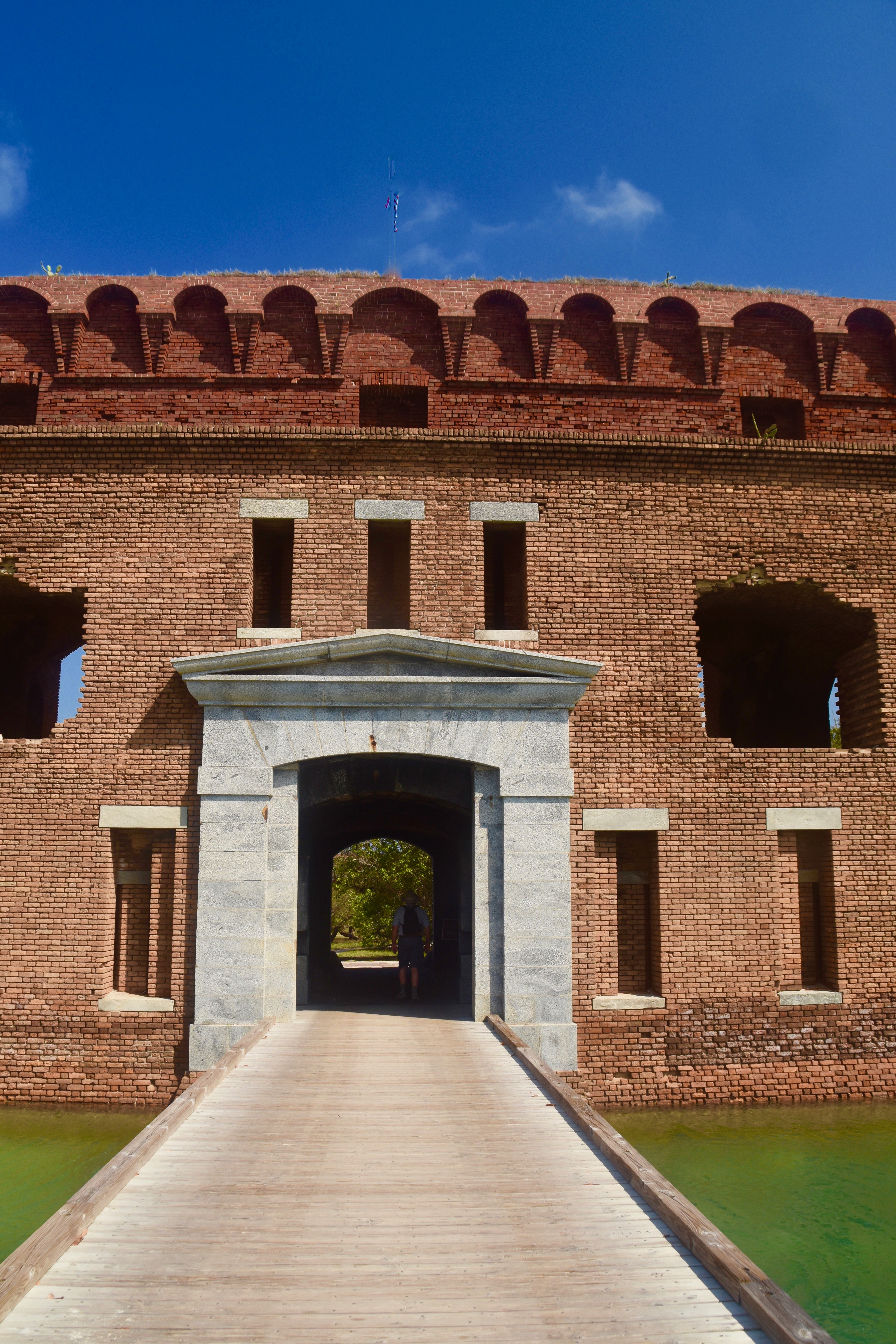
After crossing the moat you arrive at the small visitor centre where you can pick up brochures about the place. There is a $10.00 admission fee, but that was collected at check in by Key West Seaplane. Those who arrive on the ferry get a 90 minute guided tour if they want, which I presume those arriving by plane could join in as well. There is also self-guided tour that you can download in advance here. I strongly recommend that because finding the stairways to the second and third levels is not easy without a map as they are not well marked on the ground.
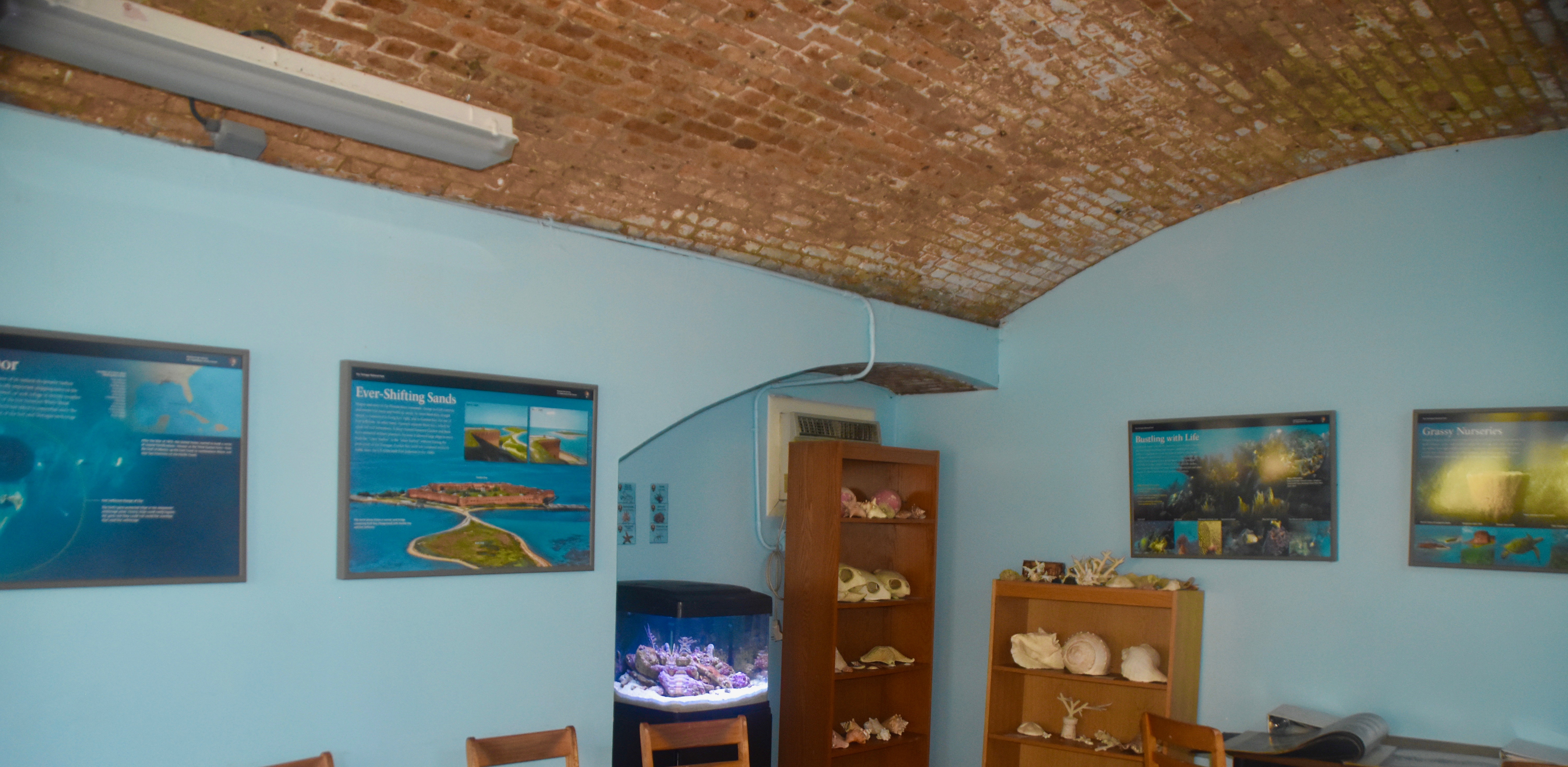
Here is a map of Fort Jefferson.
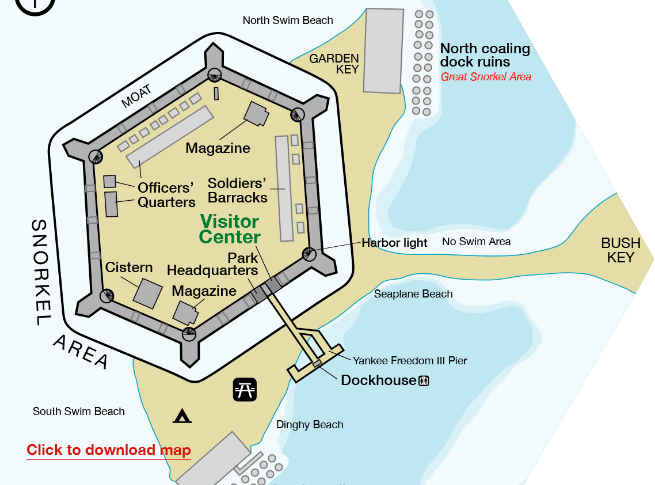
One thing you don’t need to be worried about on the Dry Tortugas is too many people. Even with the Yankee Freedom and two floatplanes anchored at Garden Key the place is so big that you will find yourself alone in many spots at the fort. This is a view of the interior showing the foundation of the Soldier’s Barracks and one of the magazines. Note the many Romanesque arches that give this place a similarity to ancient Roman aqueducts which also were often made out of bricks. It is a time honoured architectural method of creating weight bearing structures while at the same time preserving space and light.
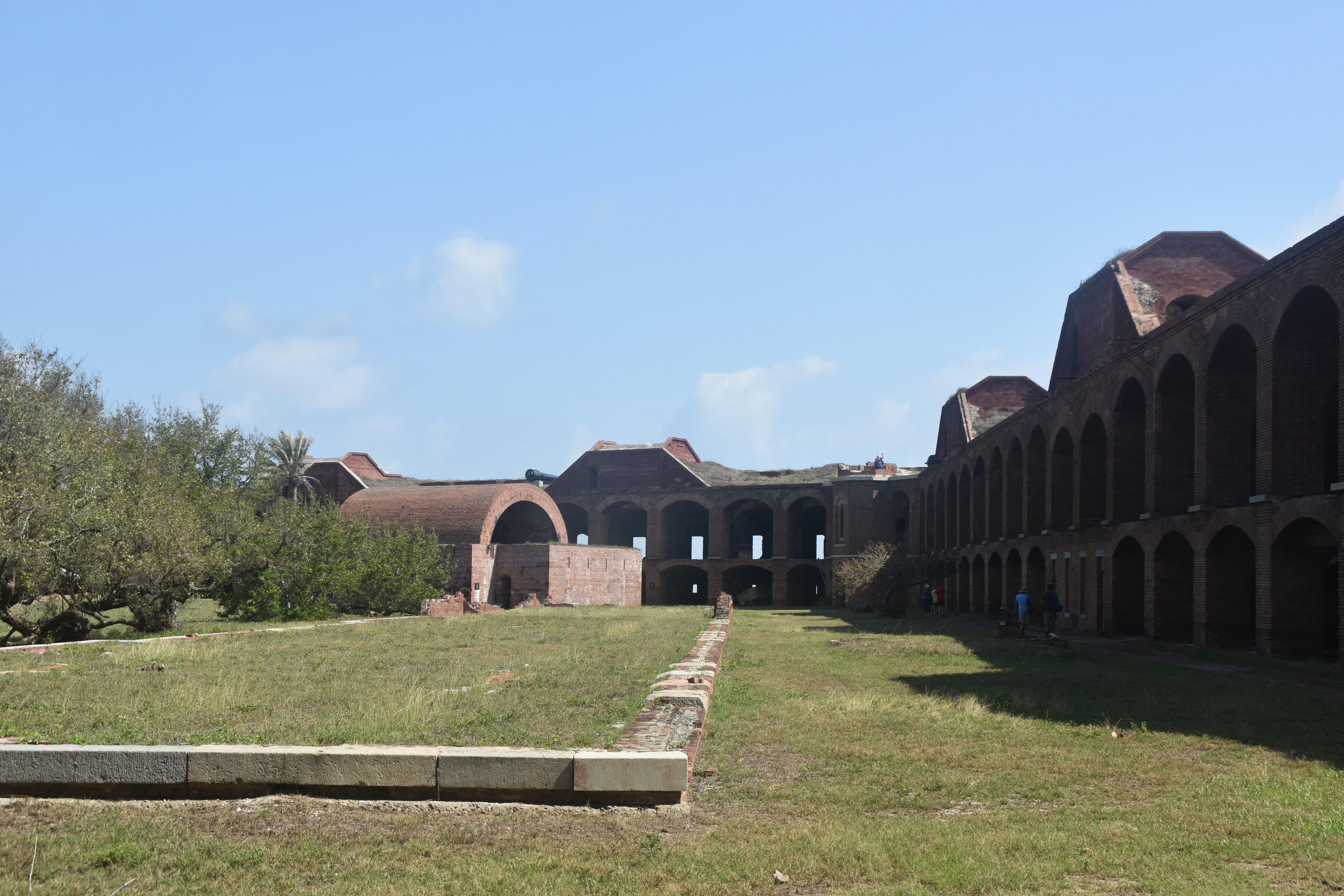
This is the hot shot building. It is not so-named because this is where the best and the brightest of the officers at Fort Jefferson were quartered, but because this is where cannonballs (shot) were literally turned red hot. The reason for this was that a red hot cannonball fired into a wooden hull would not only do damage as it struck the ship, but also cause the ship to catch on fire. The reality is that Fort Jefferson never fired a shot in anger.
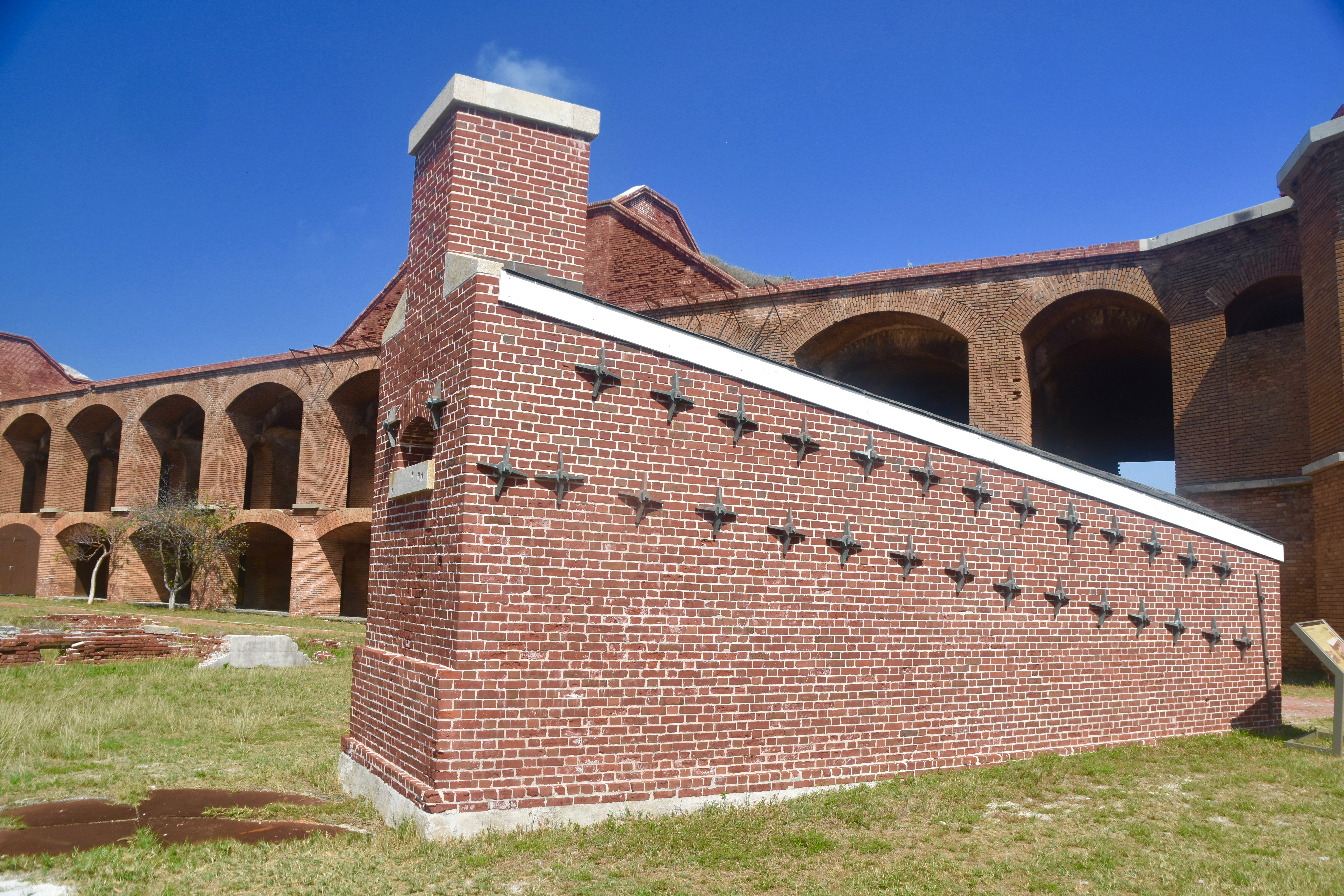
This is all that remains of the Officer’s Quarter’s.
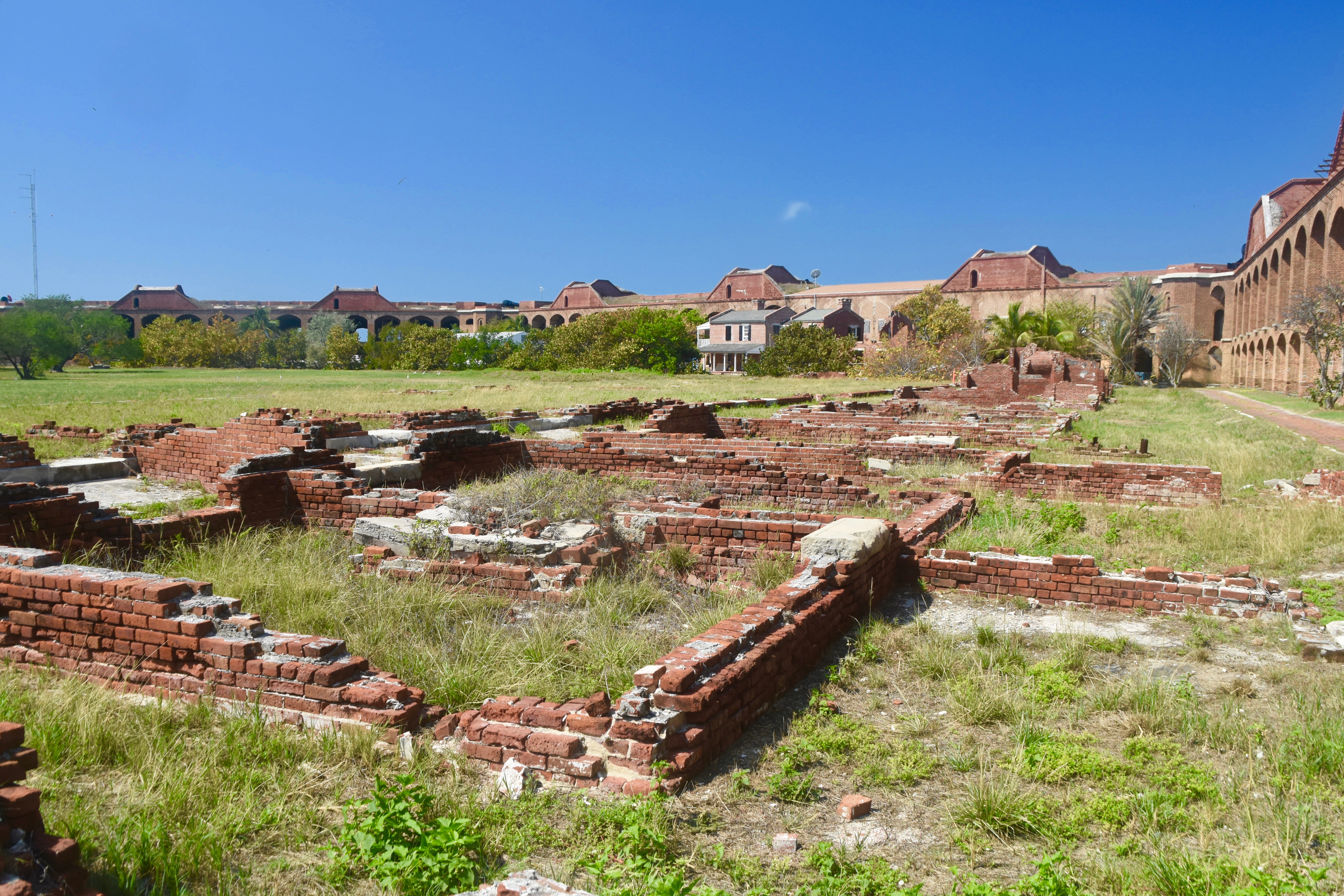
These handsome Georgian style residences now serve as the housing for the seven or eight park rangers who are permanently stationed in the Dry Tortugas.
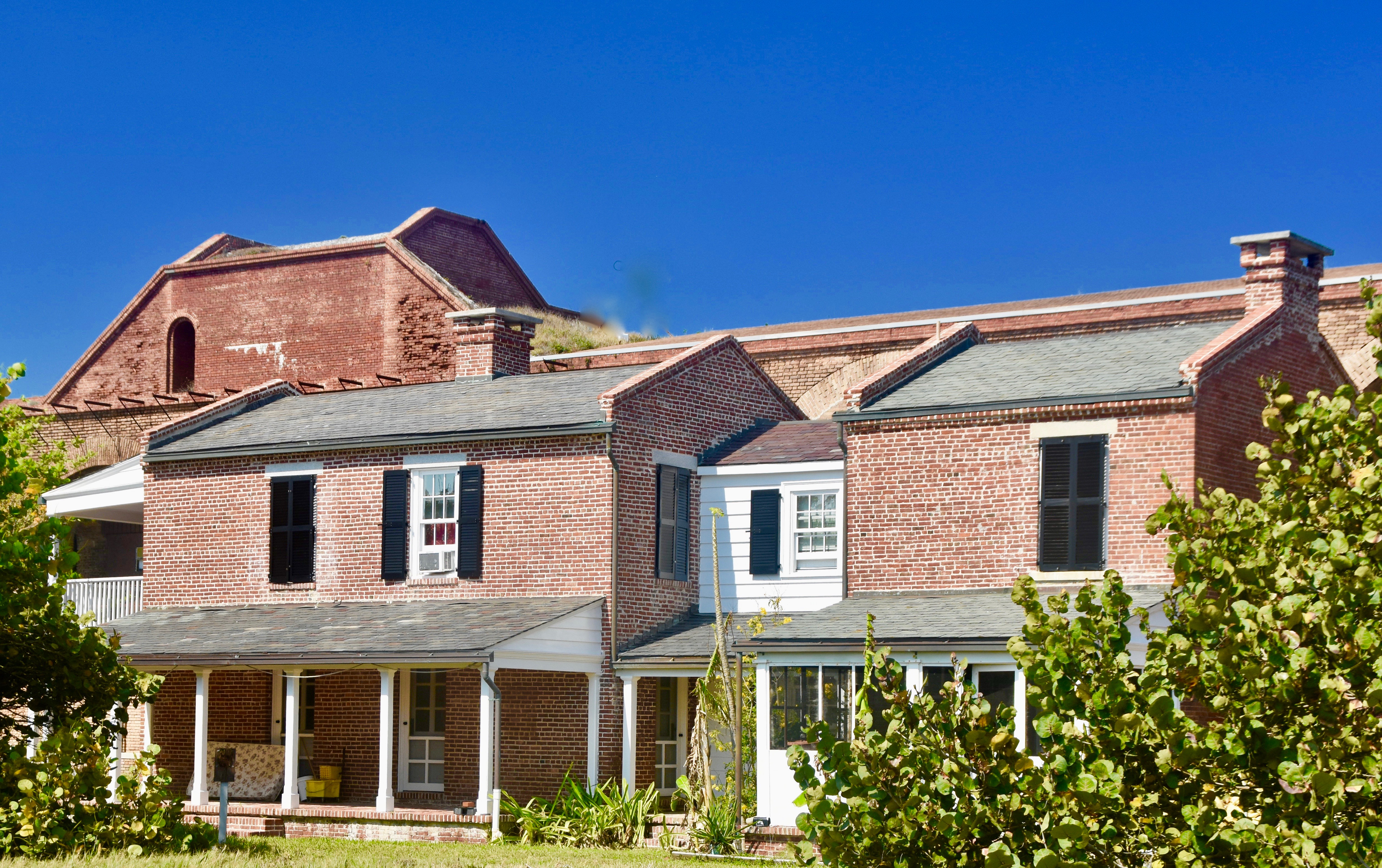
Climbing to the second story you get a chance to really appreciate the amazing symmetry of this place.
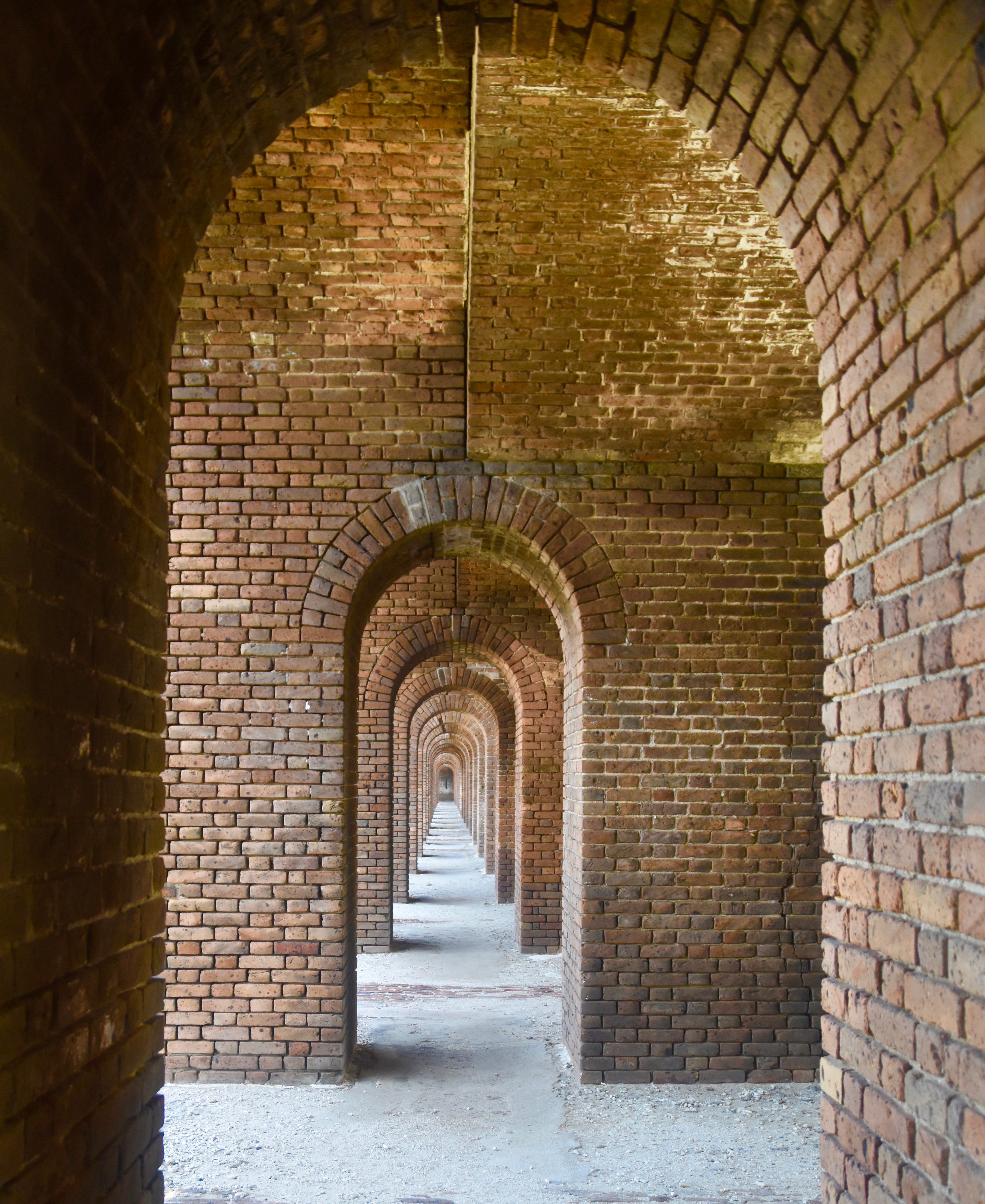
This black and white photograph shows the area on the second floor where most of the prisoners who were lodged here during the short period during and after the Civil War when Fort Jefferson served as a military prison.
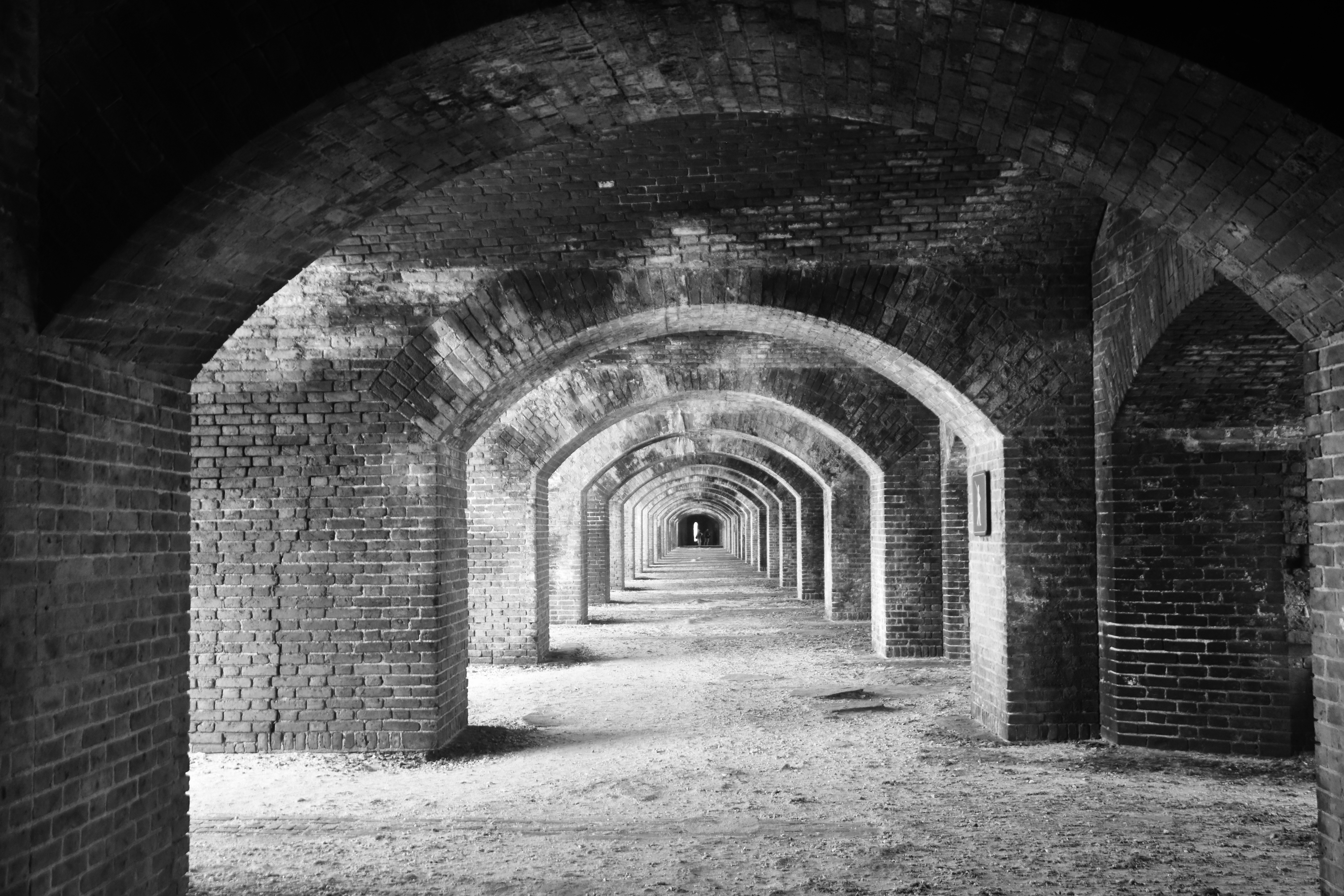
This is the cell where Dr. Samuel Mudd spent four years of his life after being convicted of conspiracy in the assassination of Abraham Lincoln. Most people believe his only crime was treating John Wilkes Booth broken leg, not knowing Wilkes had broken it after jumping from the theatre booth where he had just shot Lincoln. After a yellow fever outbreak in 1867 claimed the life of Fort Jefferson’s doctor, Mudd stepped up and was credited with saving many lives. He was pardoned by President Andrew Johnson in 1869.
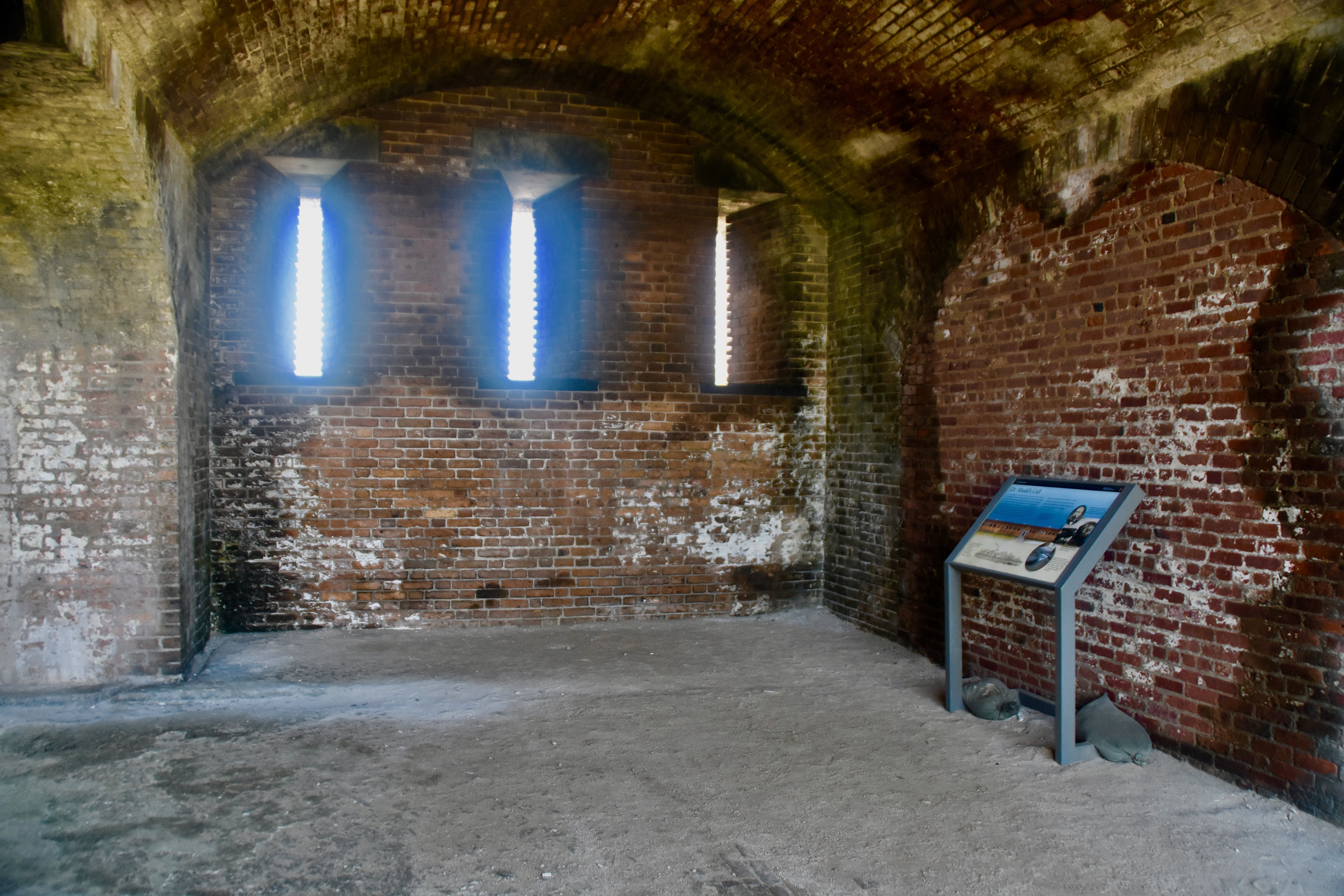
This is all that remains of the hospital where Dr. Mudd performed his heroic deeds.
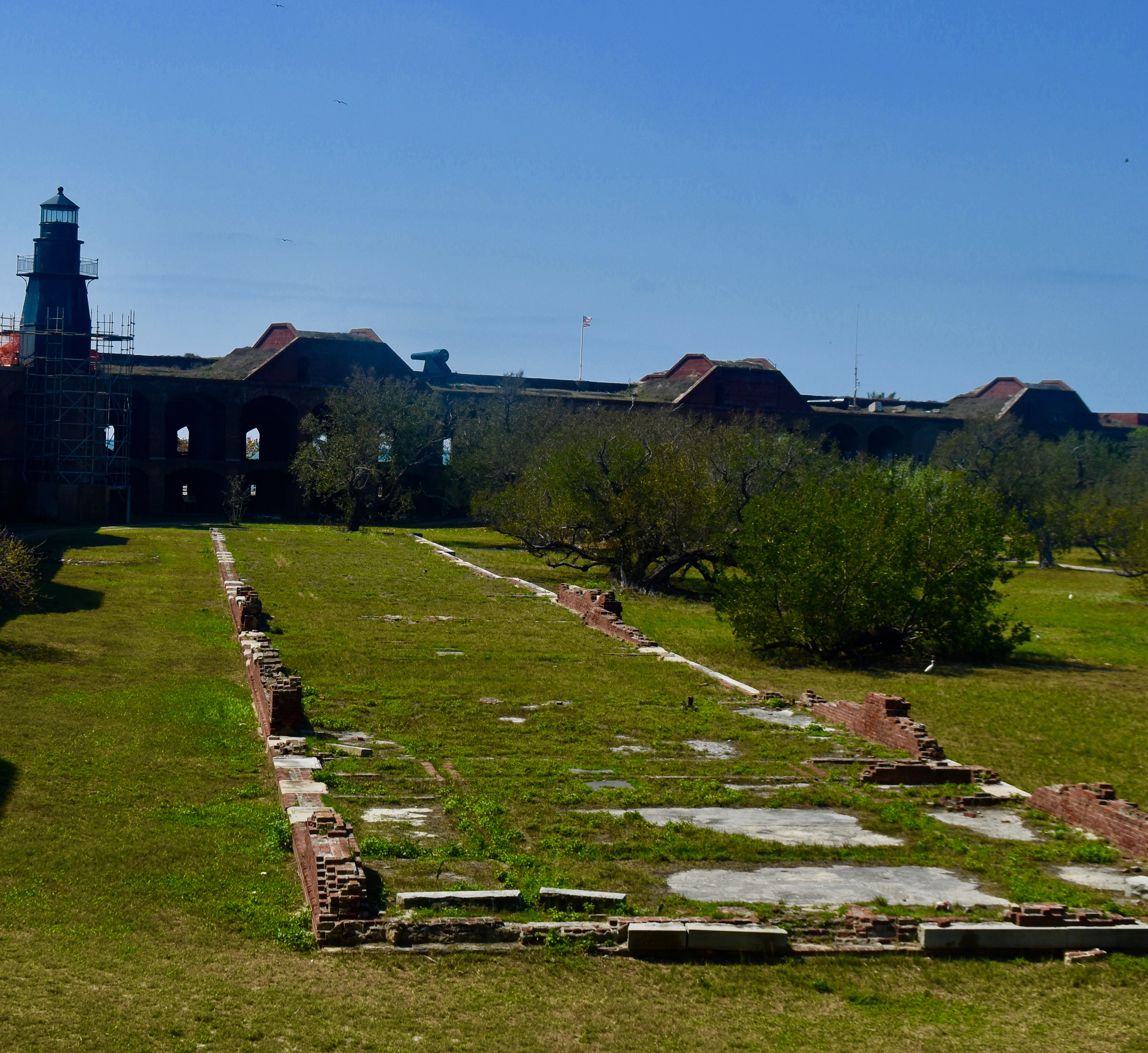
Getting to the third story you are back out in the open with marvellous views in 360°. This is a 15 inch Rodman, designed by Civil War artillery expert Thomas Rodman who created an entire series of true heavy guns that were a great improvement over previous versions that tended to explode upon firing. At the time it was cast in 1861, it was the largest piece of artillery ever made and helps explain why the Confederates never attempted to take Fort Jefferson. They would have been blown out of the water long before they got close enough to fire back.
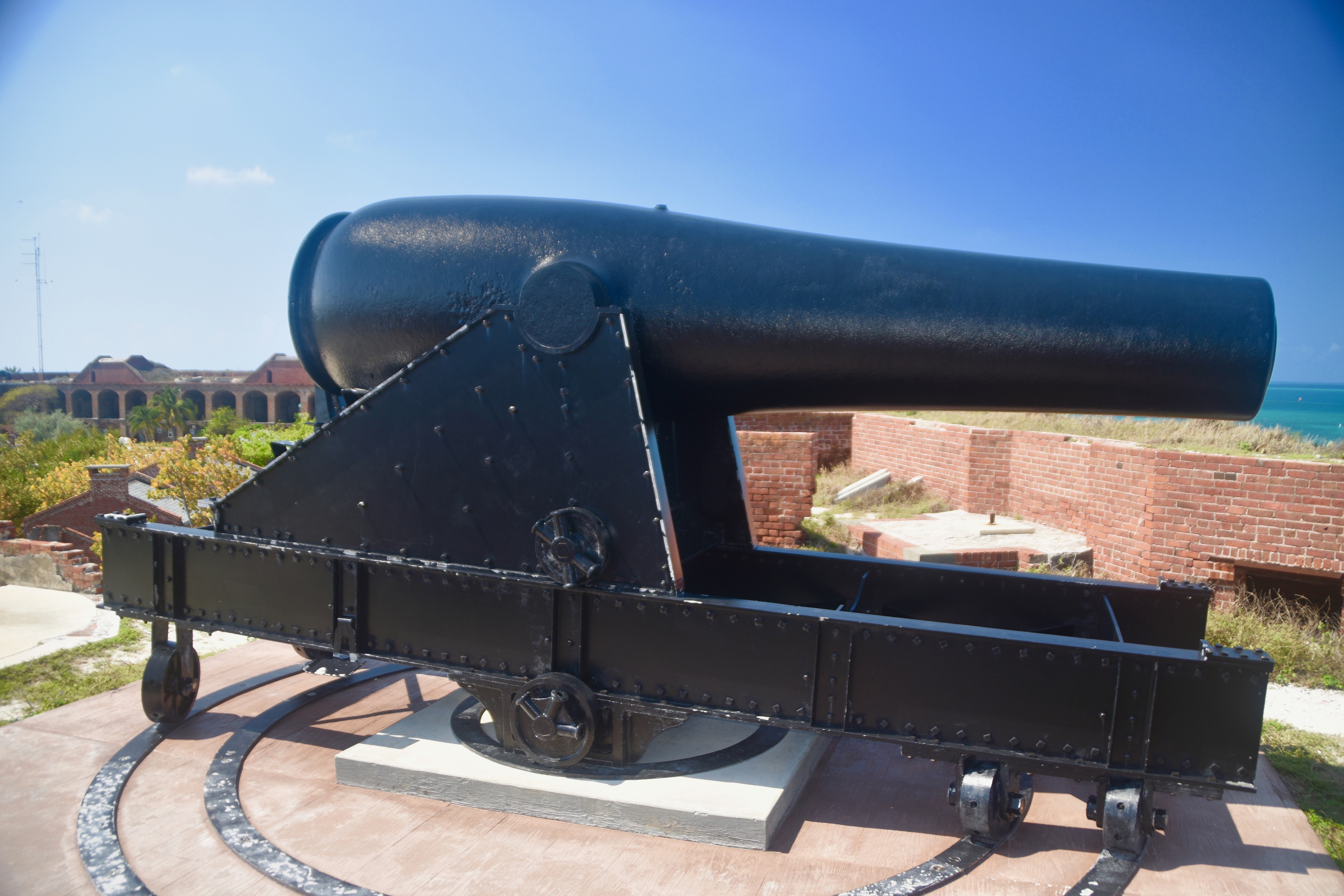
Here’s the view of the interior of Fort Jefferson from the top level. Note the Coast Guard cutter anchored just offshore.

Here’s a closer look.
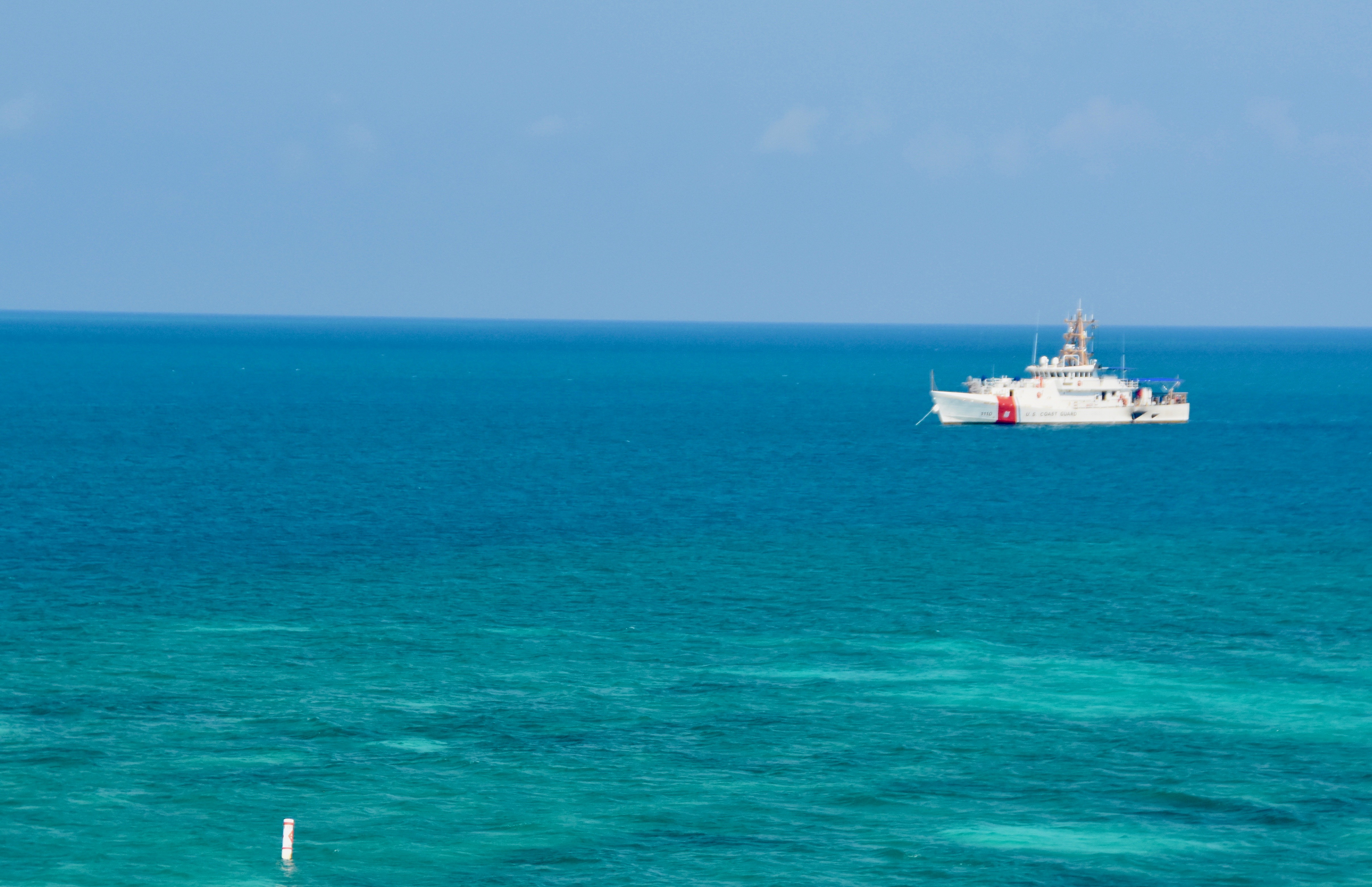
There are no guardrails or anything else preventing someone from falling into the moat, although you’d have to be pretty stupid to get close enough to the edge to do that. The path that circles most of the top level comes within a yard or so of the edge in a few places so if you have a fear of heights this walk might be a bit tricky.
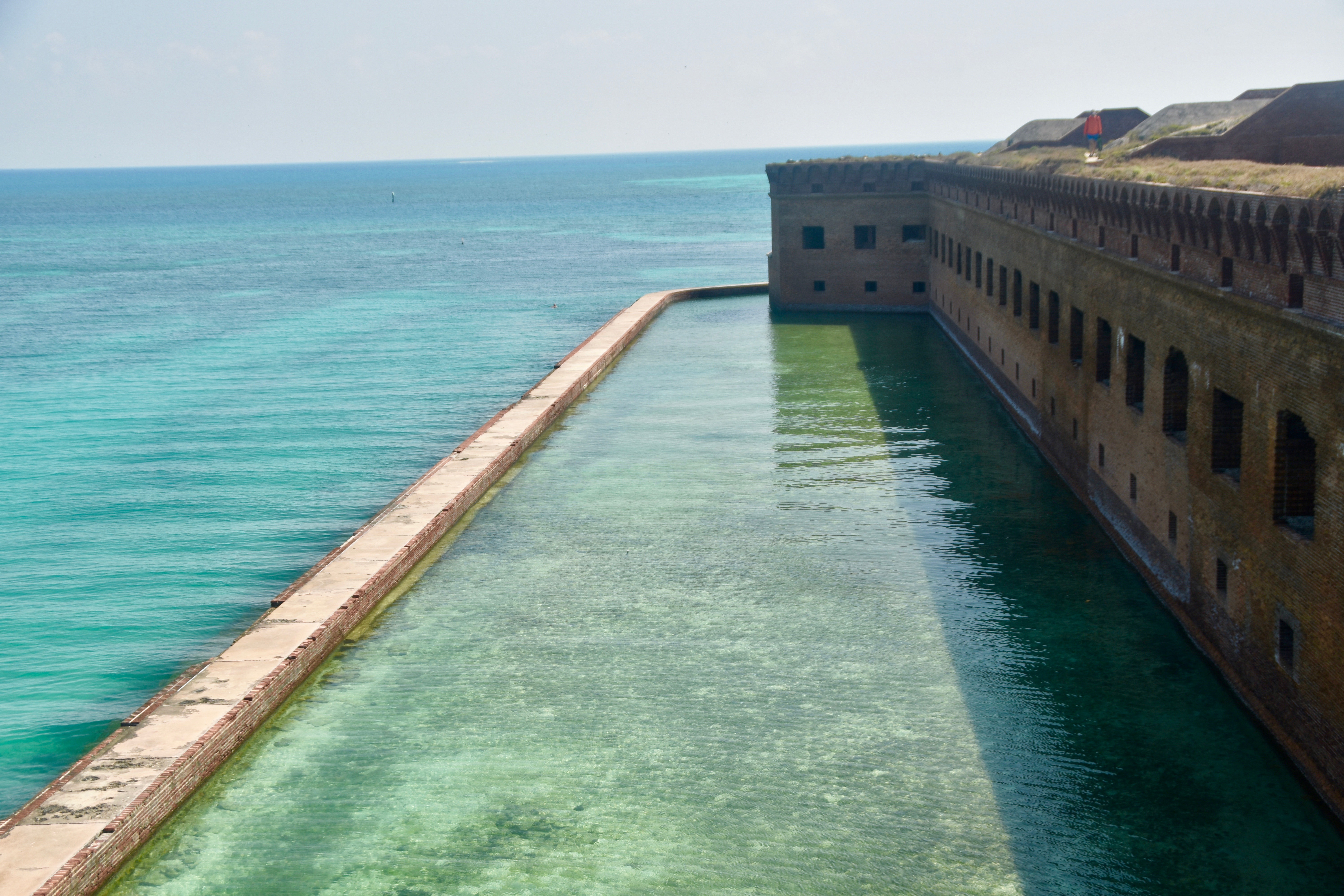
From up here you get a good sense of just how clear and pristine the waters are in the Dry Tortugas. That’s North Beach below where I plan to go snorkelling later.
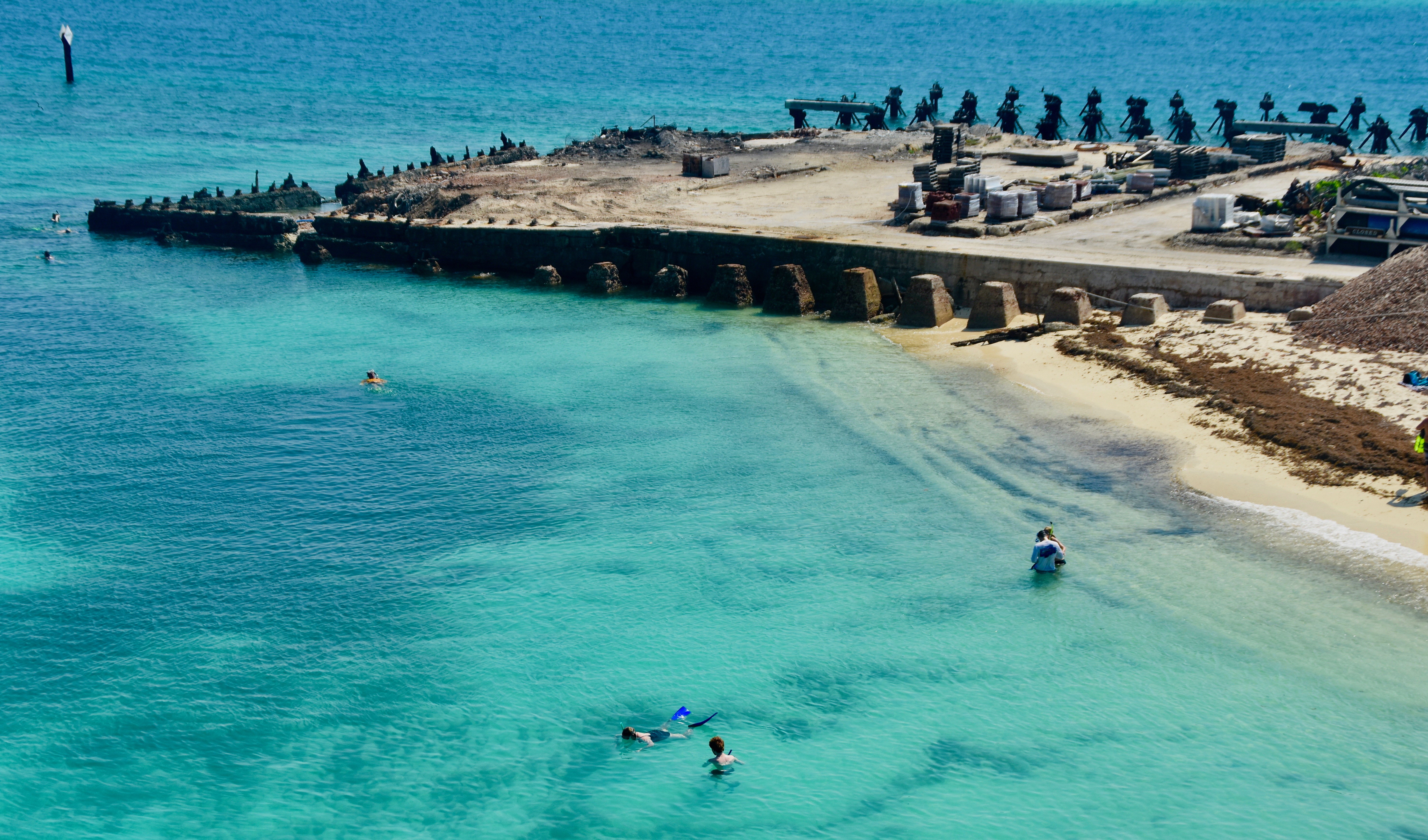
Those metal pilings are the remnants of the coaling pier and apparently a great place to snorkel or dive, but only for advanced swimmers because the metal is razor sharp in places and the current can easily push you into them. Think I’ll give that area a pass considering these waters are loaded with sharks and barracuda that would just love to be attracted by a bleeding snorkeler.
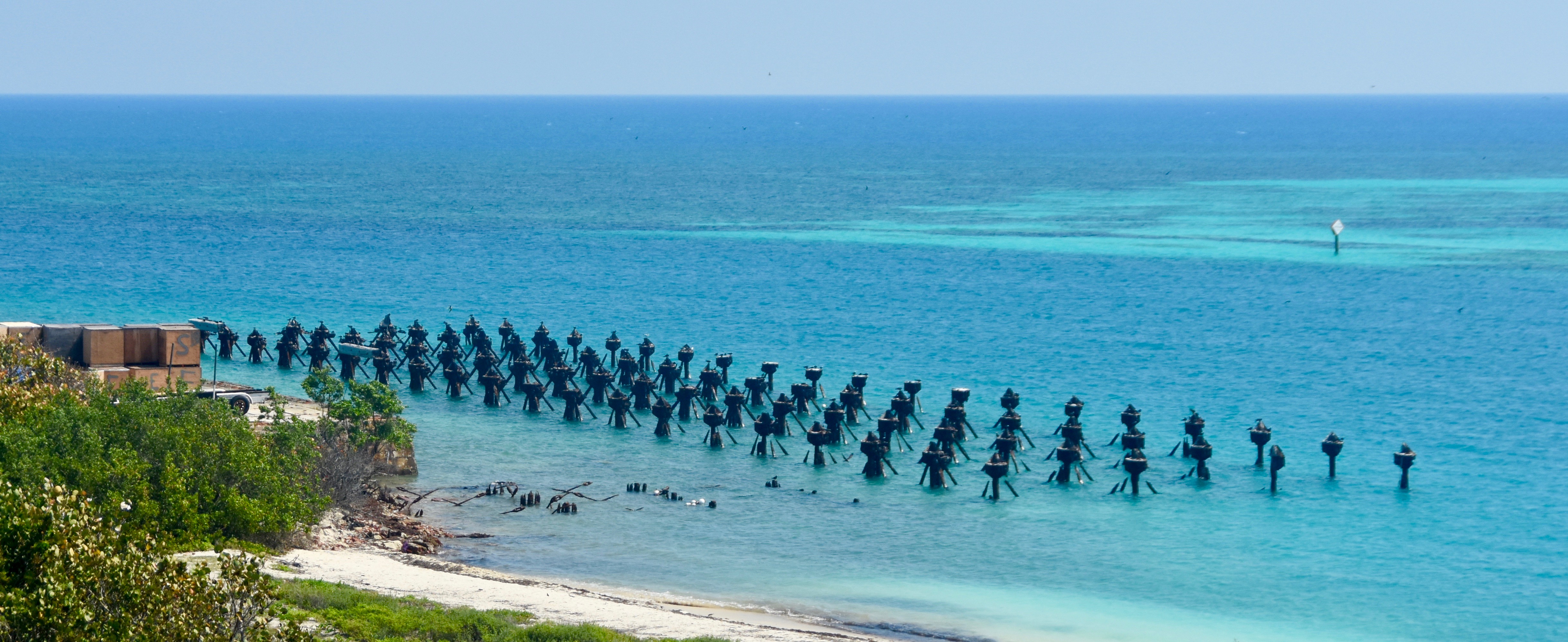
Also on the top level is the small lighthouse that was installed before they built the much larger one on nearby Loggerhead Key. The lower portion is encased in scaffolding, but if you get the right angle you can avoid getting the scaffolding in the picture.
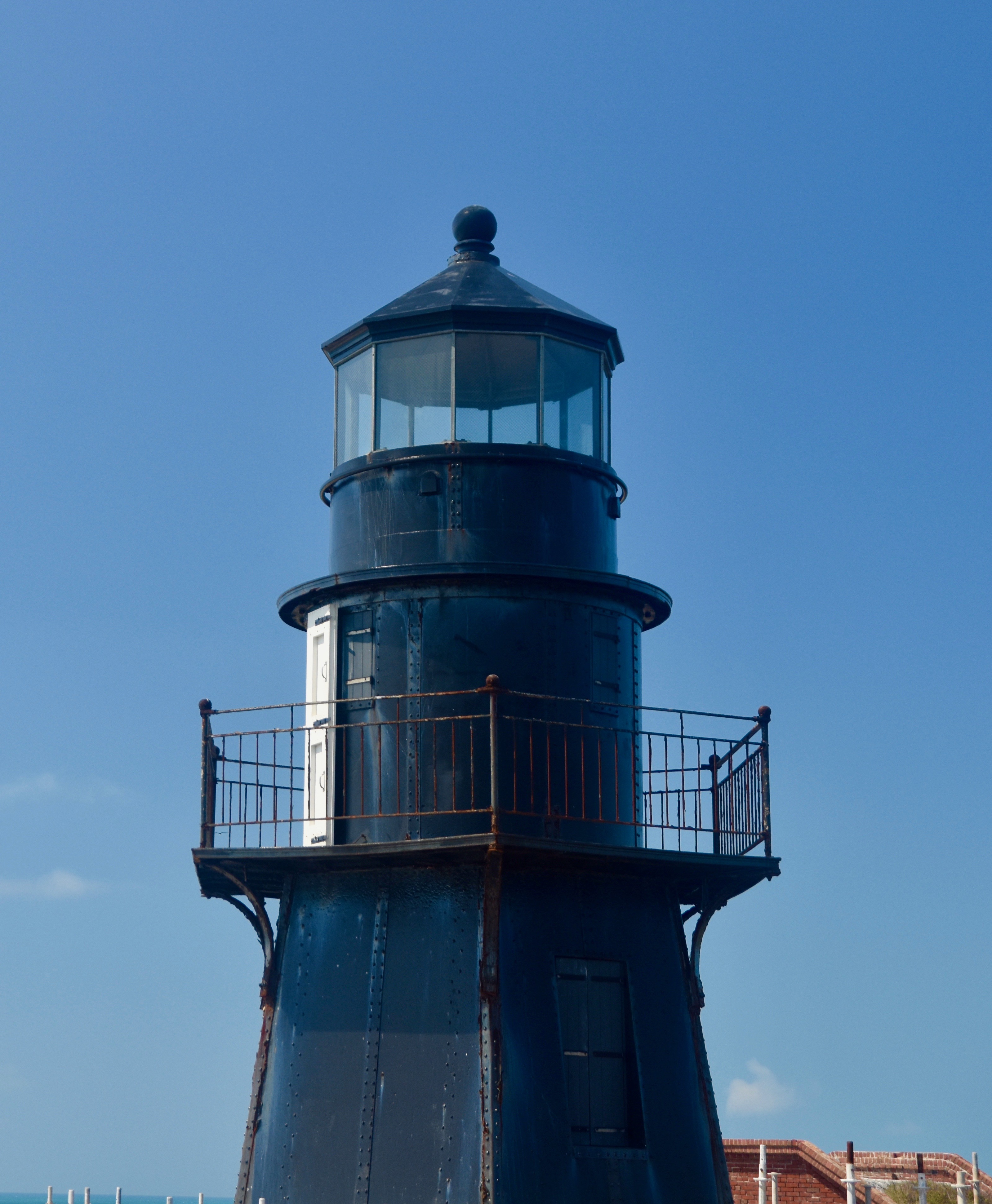
Lastly you get a great view of Bush Key from the top. It’s actually connected to Garden Key and is where the sooty terns and brown noddies congregate during nesting season which is right now. I’m headed there next.
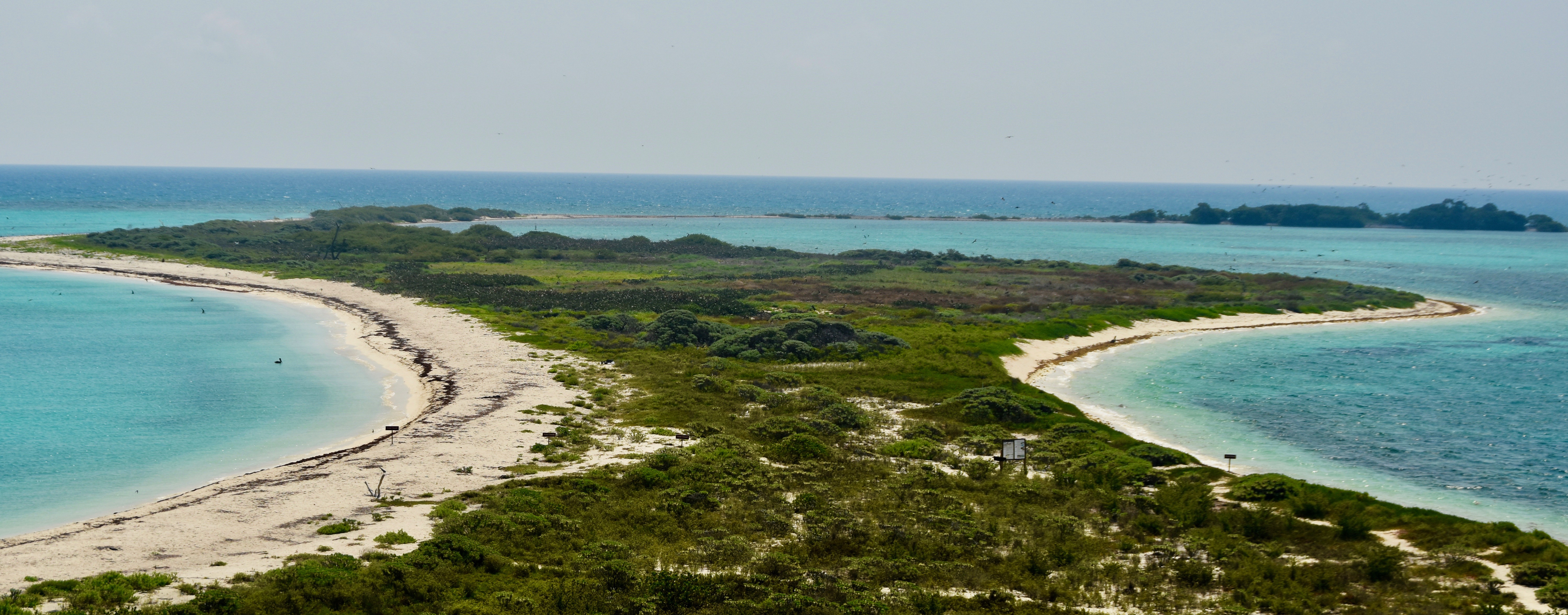
Birding the Dry Tortugas
Many of the people who come to the Dry Tortugas couldn’t be bothered with Fort Jefferson or the fishing and snorkelling – they come for the birds. These birders are following in the footsteps of John James Audubon who spent a week here in 1836 painting some of the unusual birds found on the Dry Tortugas. Strangely, although 229 species of birds have been identified in the Dry Tortugas, only seven actually breed here, the rest being transients on their way back or from the Caribbean, Mexico and Central America.
You wouldn’t know it from the photograph above, but there are approximately 80,000 sooty terns breeding there, the only place in continental United States. Throw in thousands more brown noddies and you’ve got yourself a birder’s paradise. I’m heading there now.
However, not so fast. Returning to ground level I spot a circle of birders all looking intently at something in the middle of the circle. I’ve got to check this out.
How’s this for a knock your socks off sighting – a scarlet tanager, indigo bunting, rose-breasted grosbeak and a chestnut-sided warbler all in one place. These are some of the most colourful birds we have in North America and to see them all together is amazing. They are drawn by the fresh water that the Park Service has provided before they resume their flights northward. Even without the breeding colony on Bush Key, this would be enough to attract birders to Fort Jefferson.
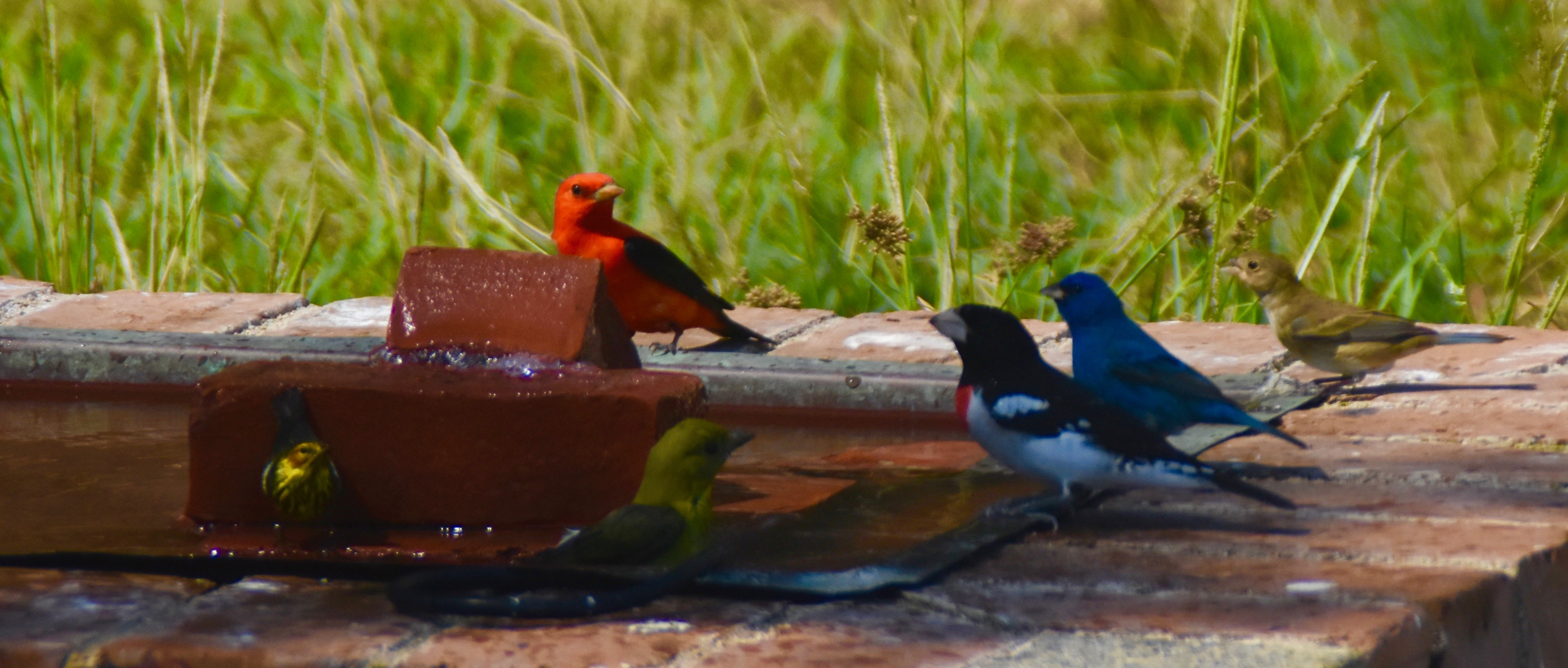
Back outside the fort’s walls I change plans slightly and decide to walk around the outside via the walkway that divides the moat from the sea.
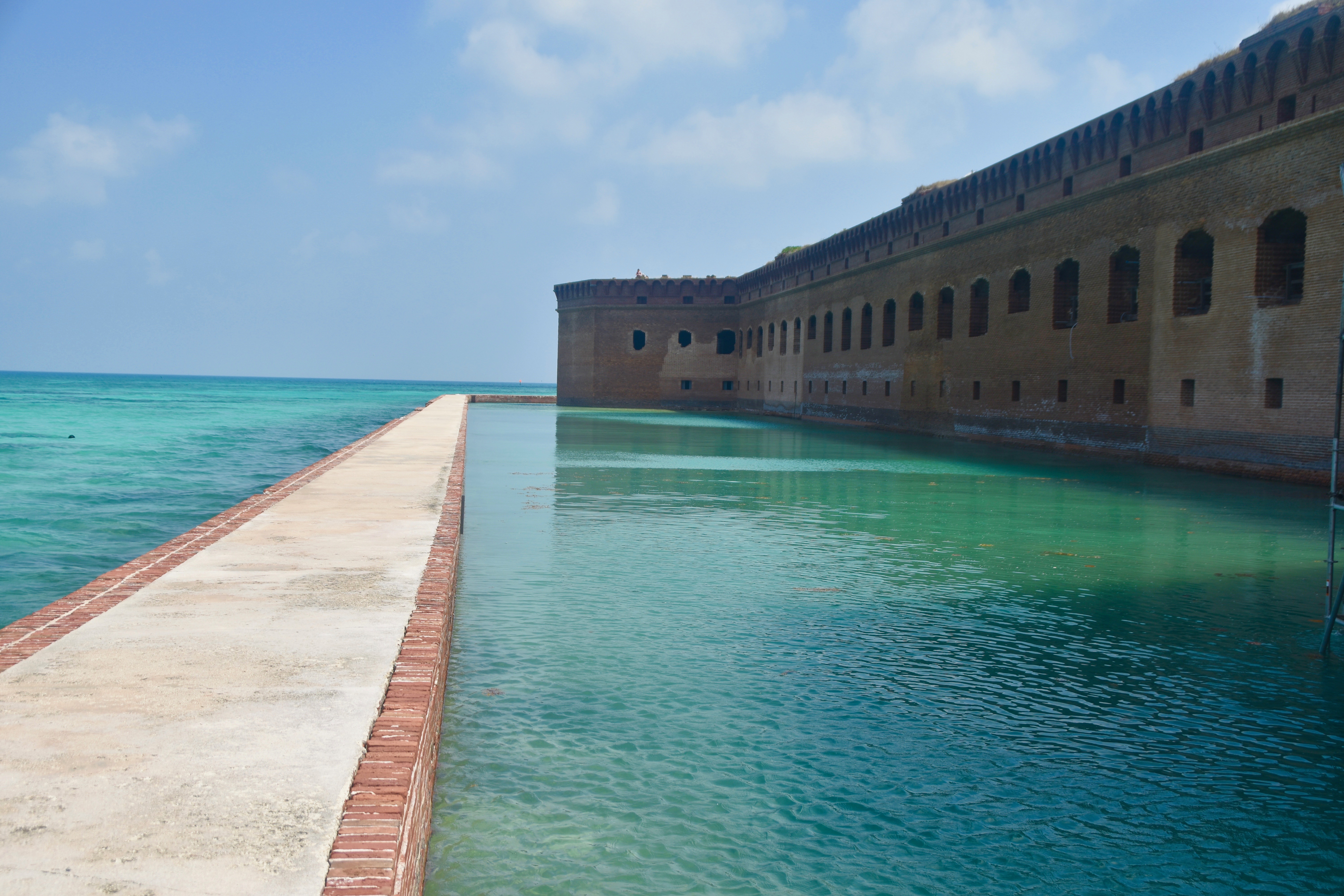
This is the lighthouse and walls from the moat walkway.
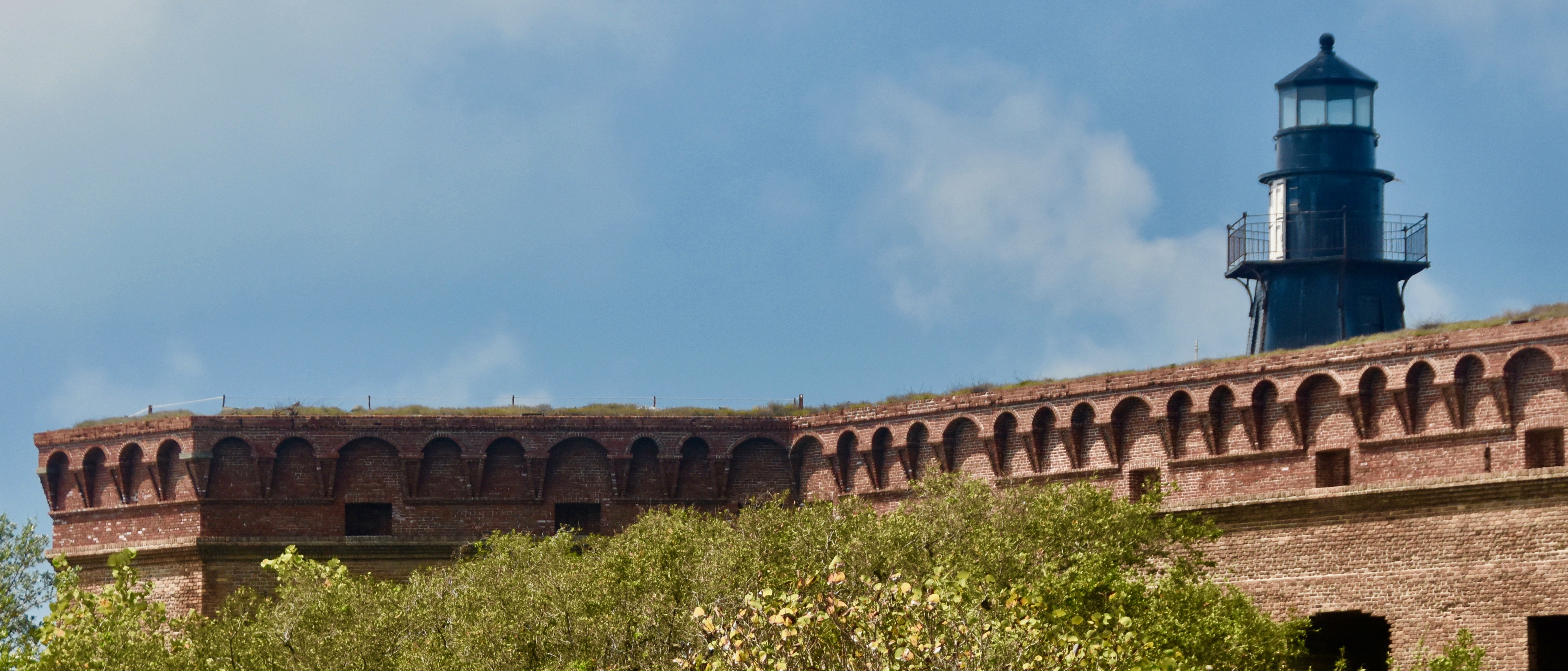
Passing the remnants of the coaling pier I get a view of the brown noddies congregating on the structure. This is a life lister for me and I suspect many others birders who make the journey to Fort Jefferson.
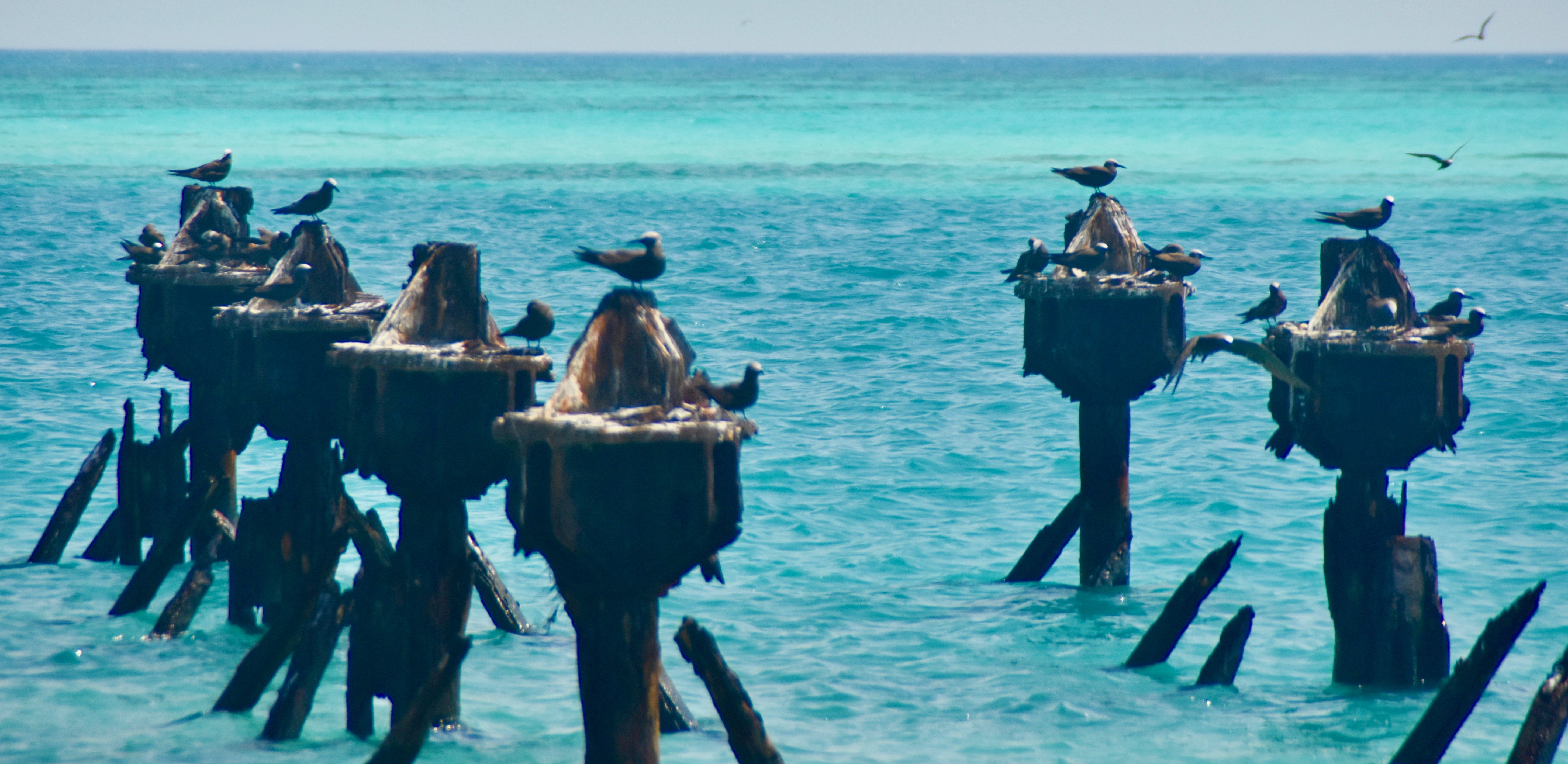
Bush Key is closed to the public during the breeding season, but you can get close enough to get a good look. Anyone who has ever visited a breeding seabird colony knows that they are a cacophony of screeches, screams and squawks that can be literally deafening. The sooty terns and brown noddies don’t disappoint as they take to the air in total panic every time something that is perceived as a threat passes by. In this case it was a black vulture.
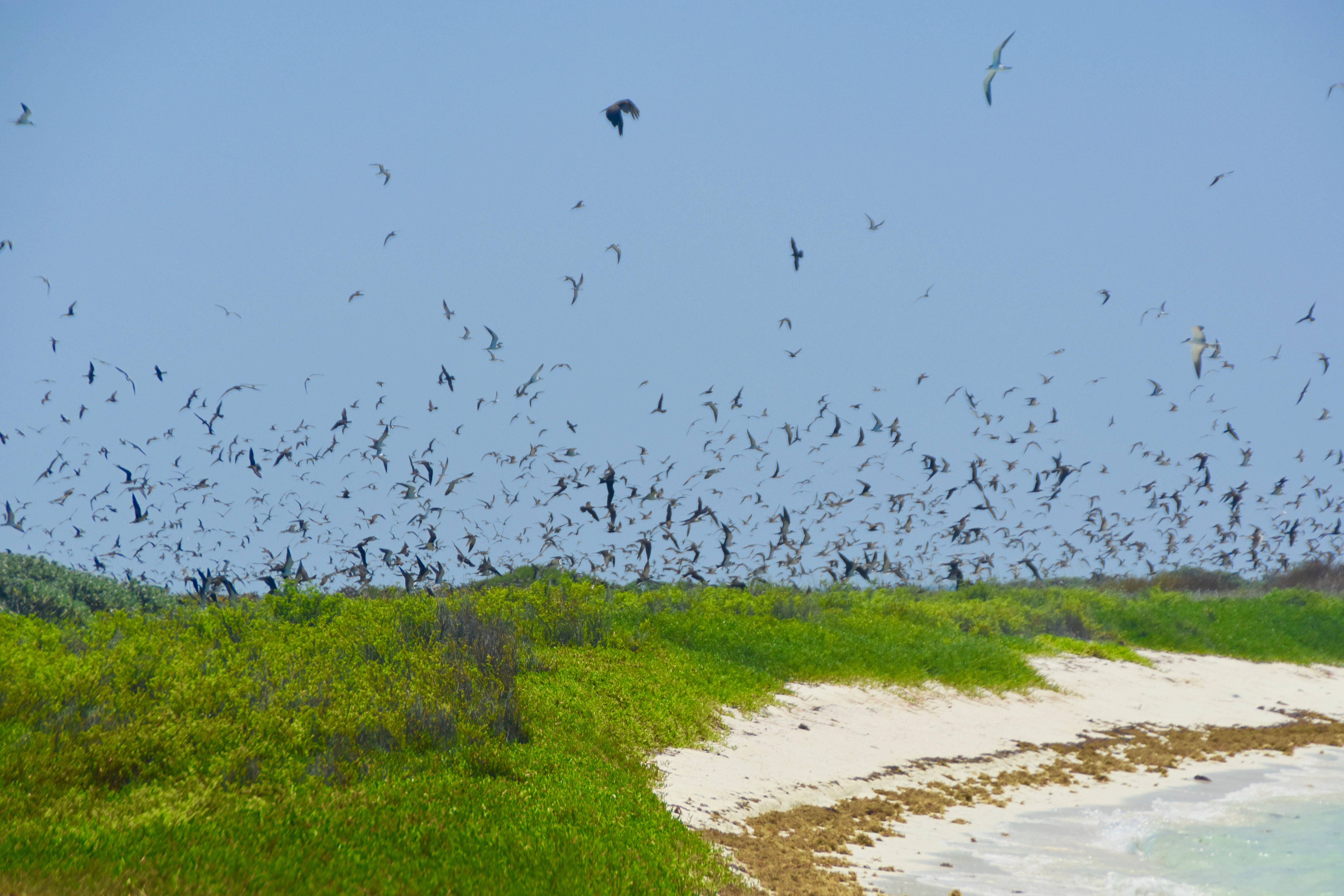
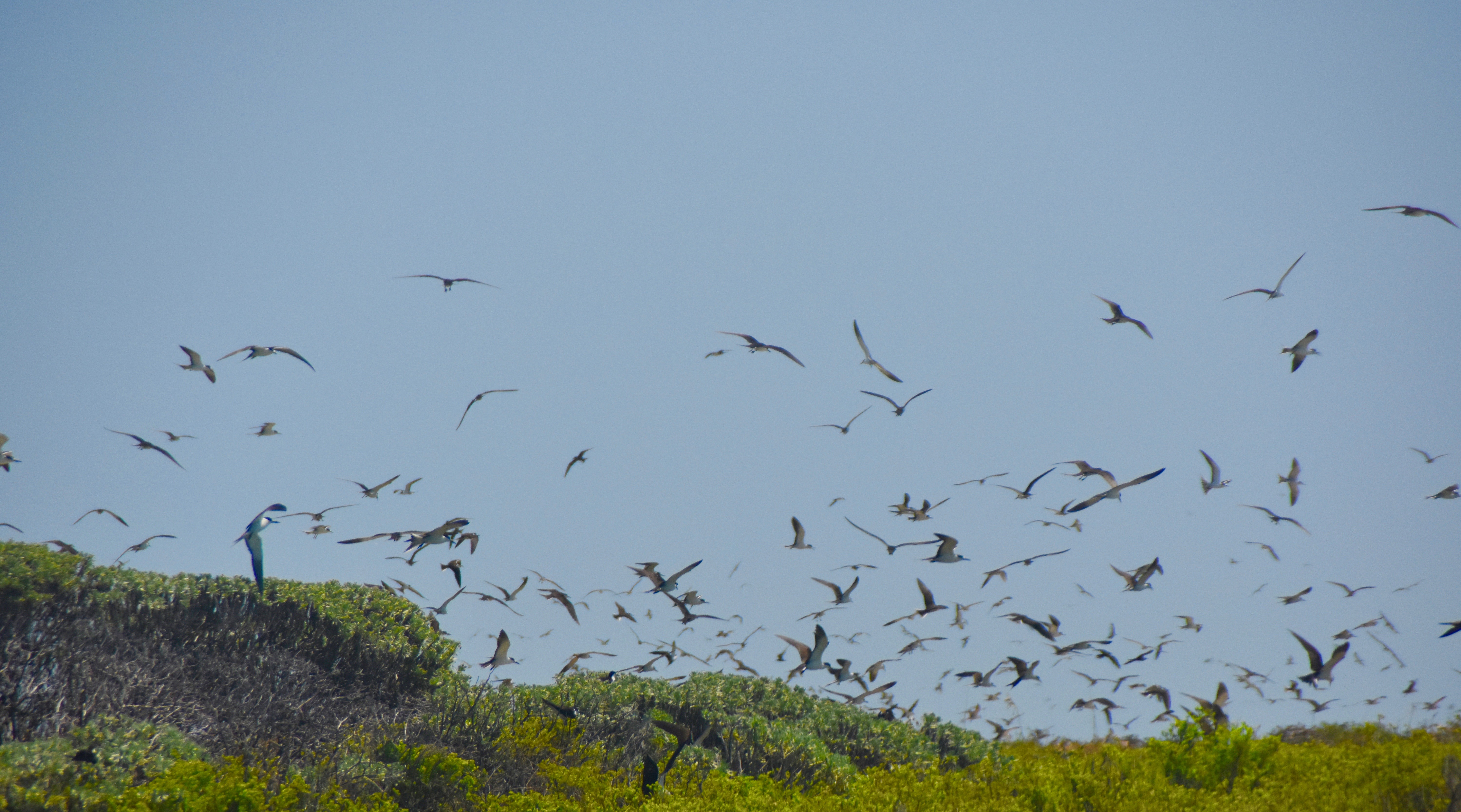
Snorkelling the Dry Tortugas
Ok, I’ve seen the fort and the birds, now it’s time to go snorkelling. Key West Seaplane Adventures provides snorkelling gear which I’ve stowed under a picnic table near the seaplane landing. It’s only a short distance from there to North Beach and in a few minutes I’m all set to go.
In crocodile infested waters? Maybe not.
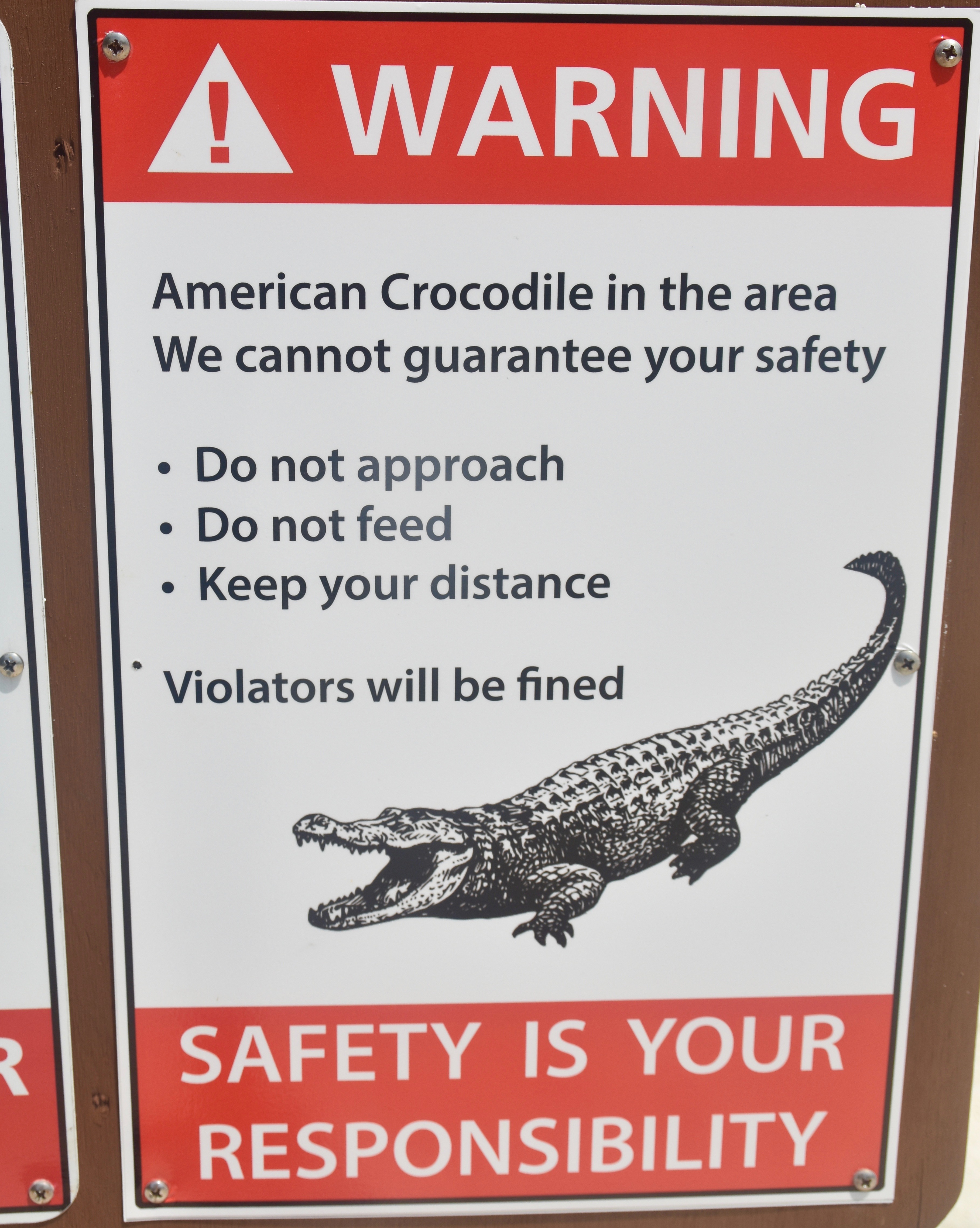
What the hell – YOLO! I’m going anyway. Besides I brought along my new Canon Power Shot D30 which is waterproof to 82 feet just to take underwater pictures. I can’t let it down.
So here’s the good news about the snorkelling – I saw lots of fish, particularly alongside the moat and did not run into a crocodile. The bad news is that I couldn’t see a damn thing through the camera, partly because I didn’t have glasses on and partly because everything underwater has a green tinge to it that makes it hard to bring out the bright colours of the fish. Here’s the best I could – a couple of snappers and a pufferfish.
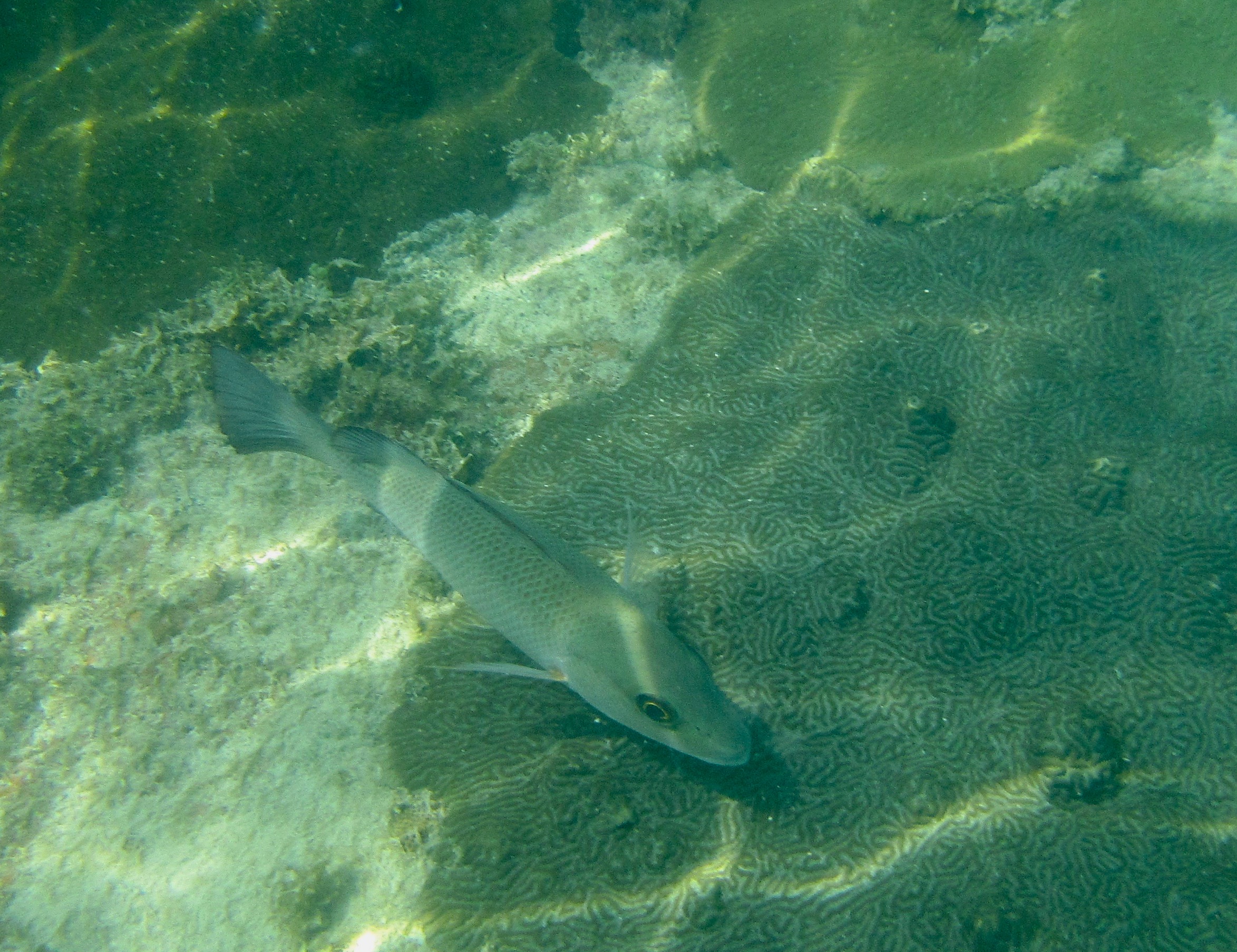
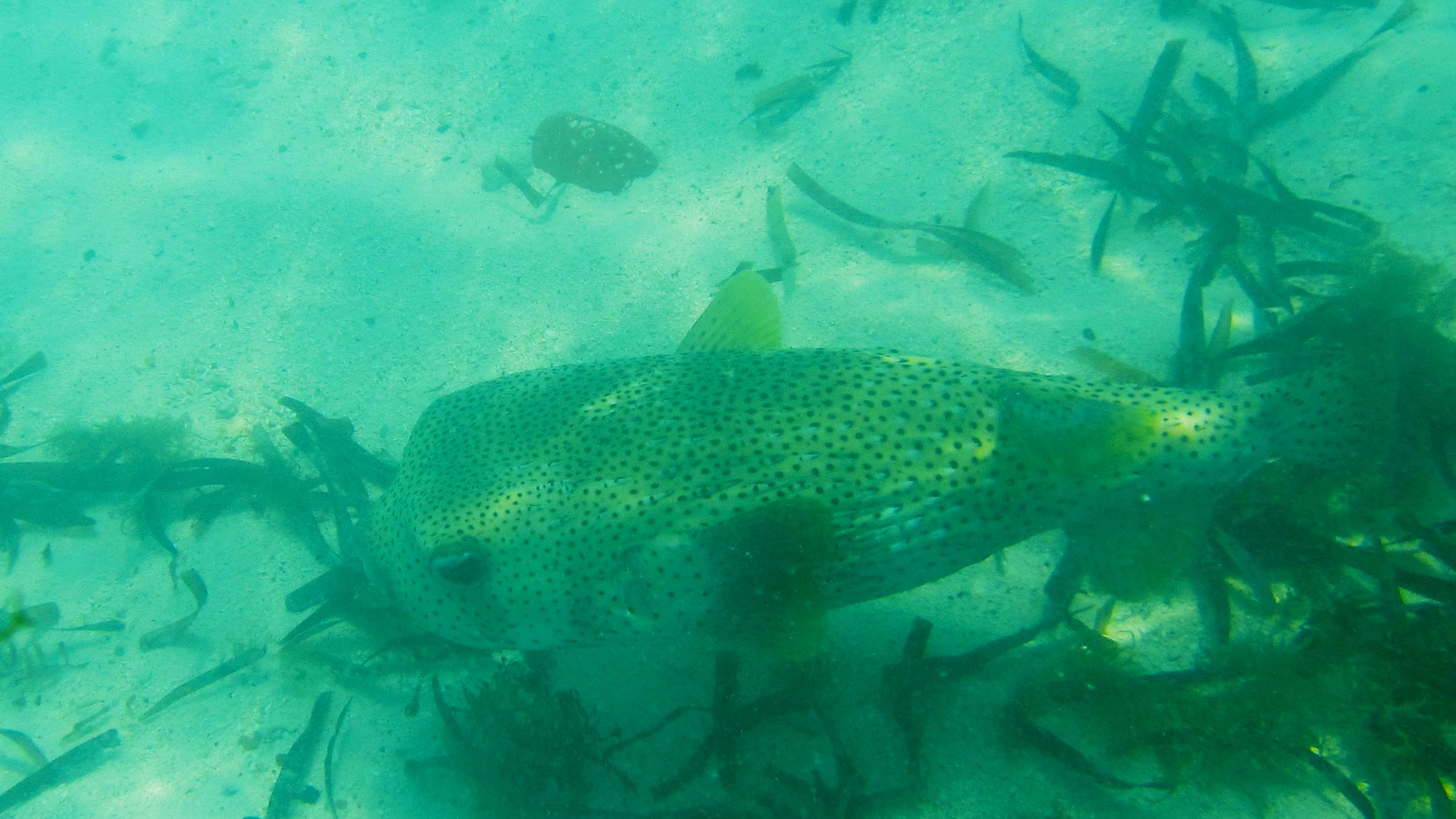
I’ll definitely need come up with a better plan next time.
Well, that’s how I spent 2½ hours on the Dry Tortugas, but there’s still more to come as we head back to Key West. Since you are in the same seat you get a completely different view of things on the way back from on the way out.
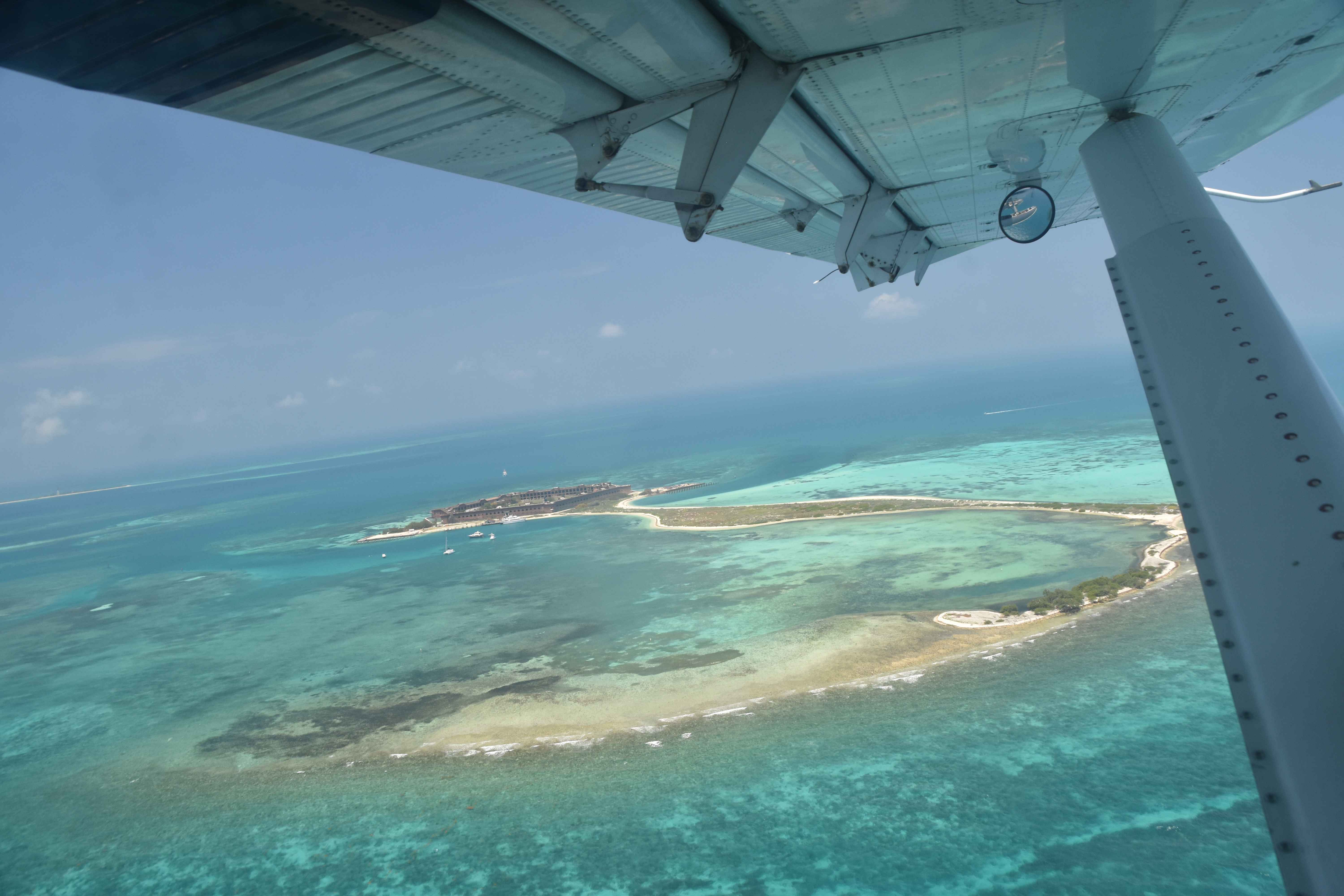
That’s the wreck of the Patricia down below.
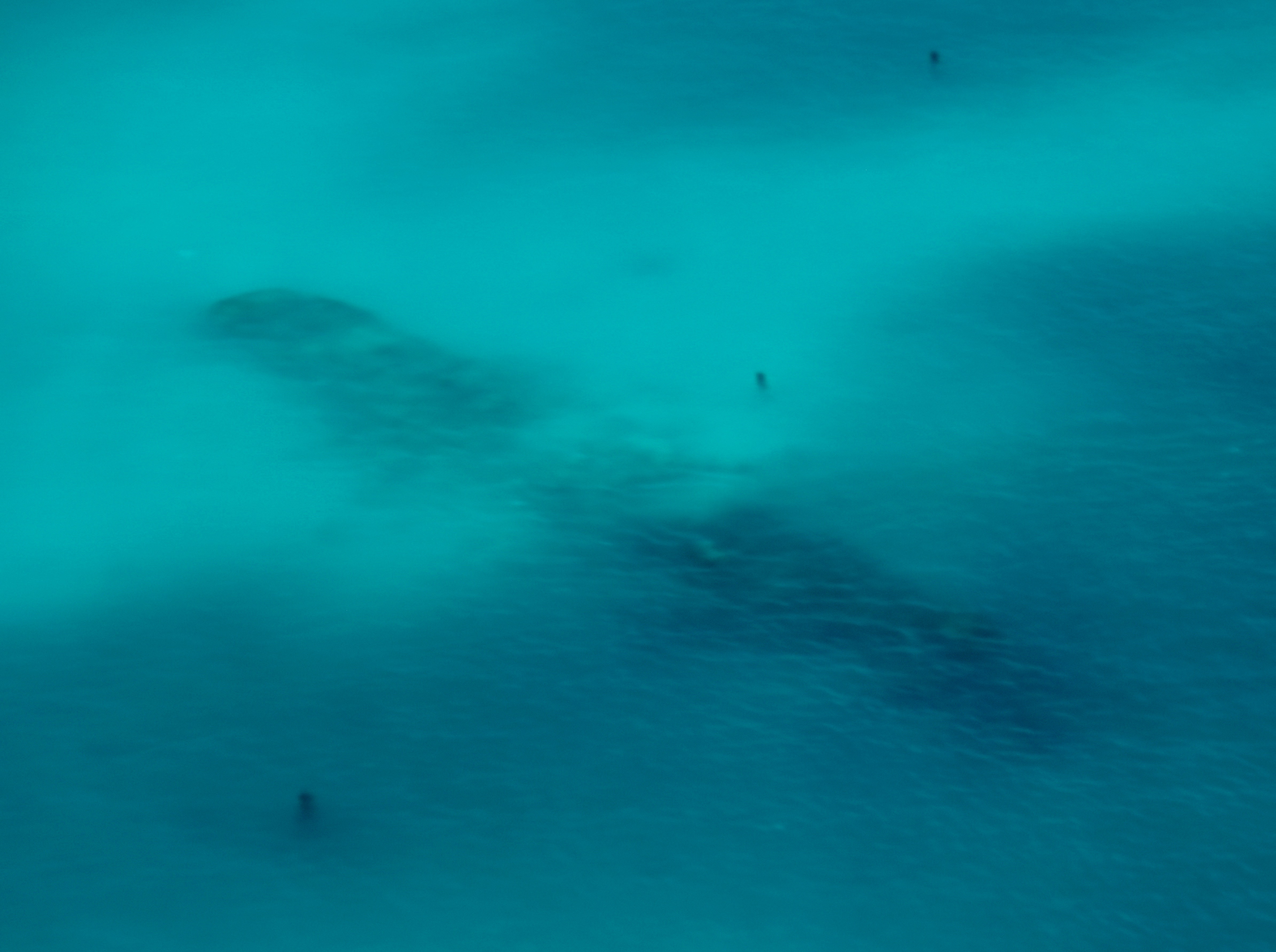
And a view of old Key West and Mallory Square
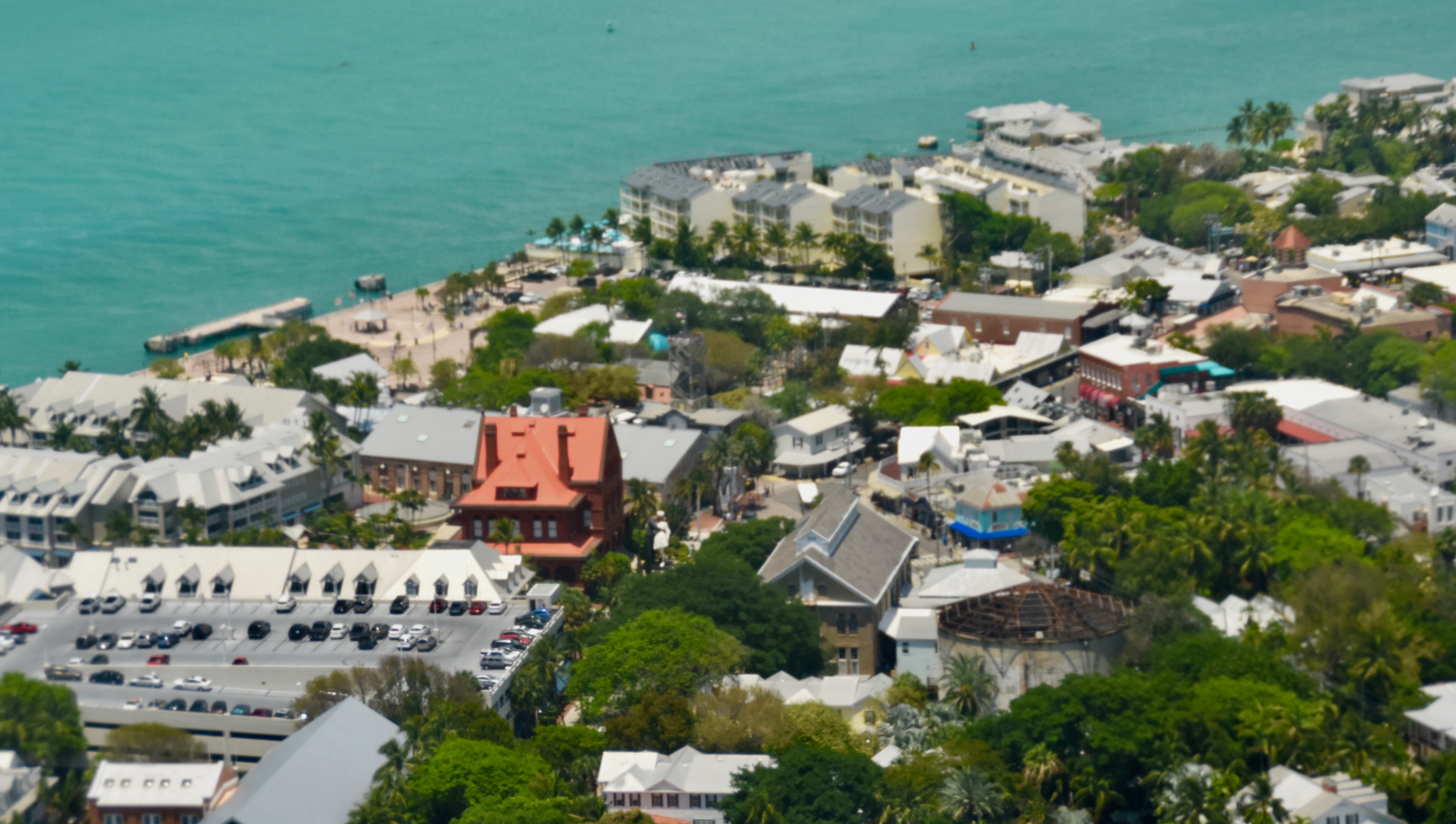
So it’s welcome back to the Conch Republic. Time to park the vehicle and head to the Green Parrot. Hope you enjoyed the trip.
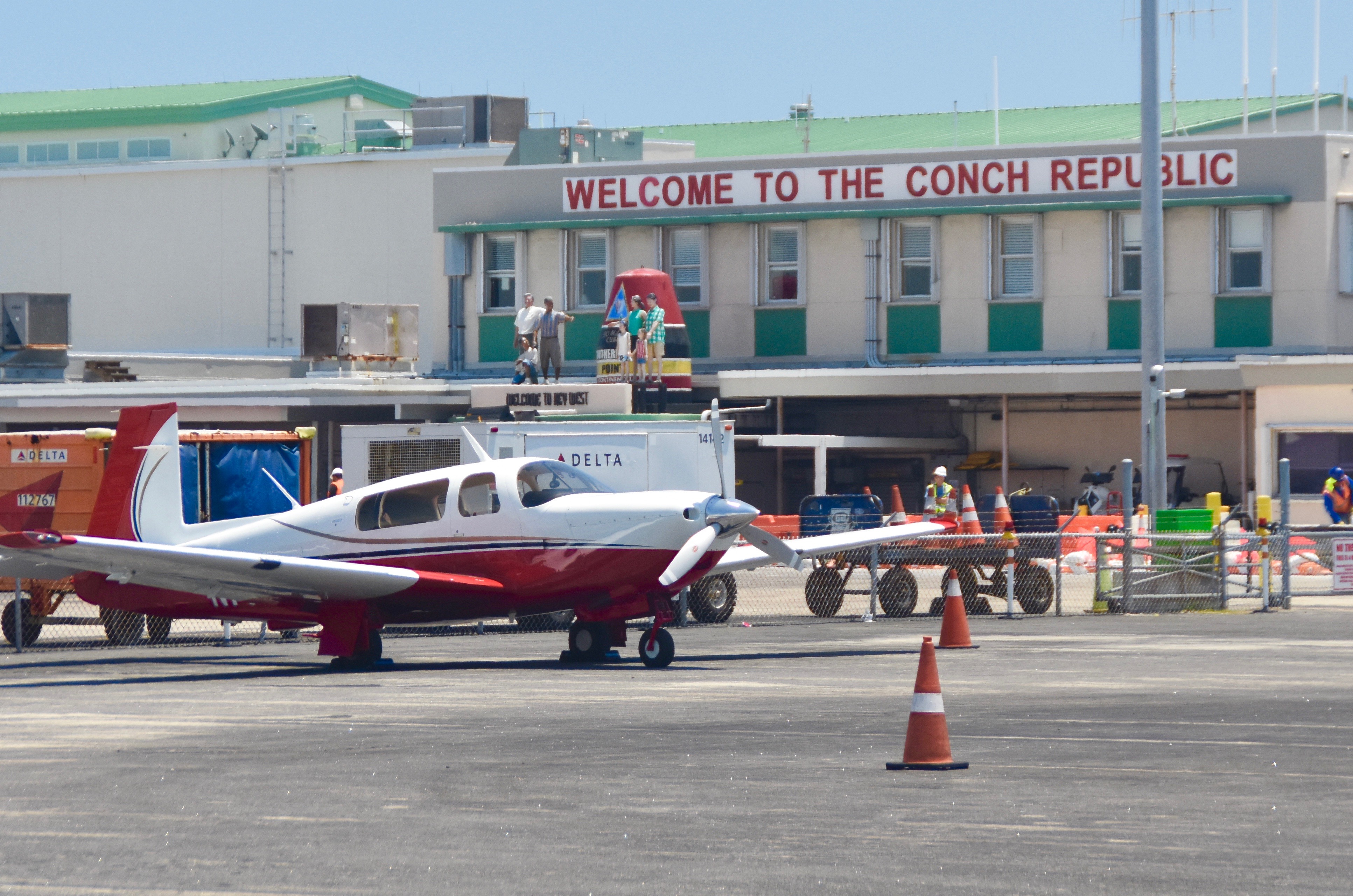
Next I’ll visit one of my favourite spots in Key West, Hemingway House which is in my opinion, the number one Hemingway site in the world. Please join me there or perhaps later at the unique Key West Cemetery.

